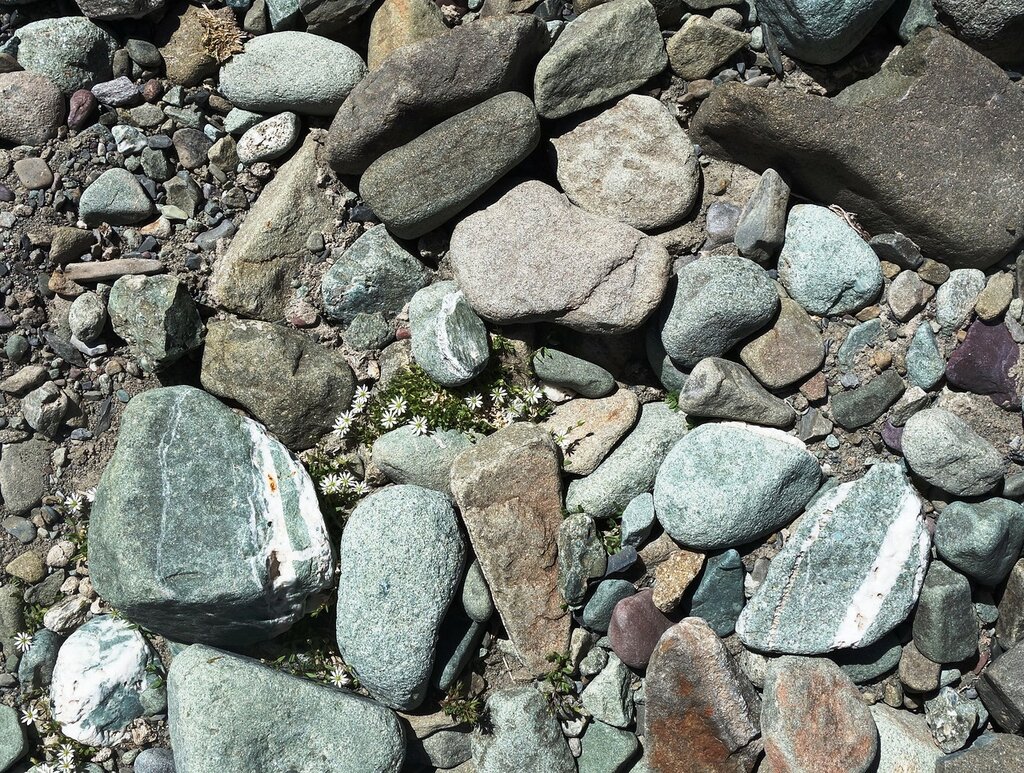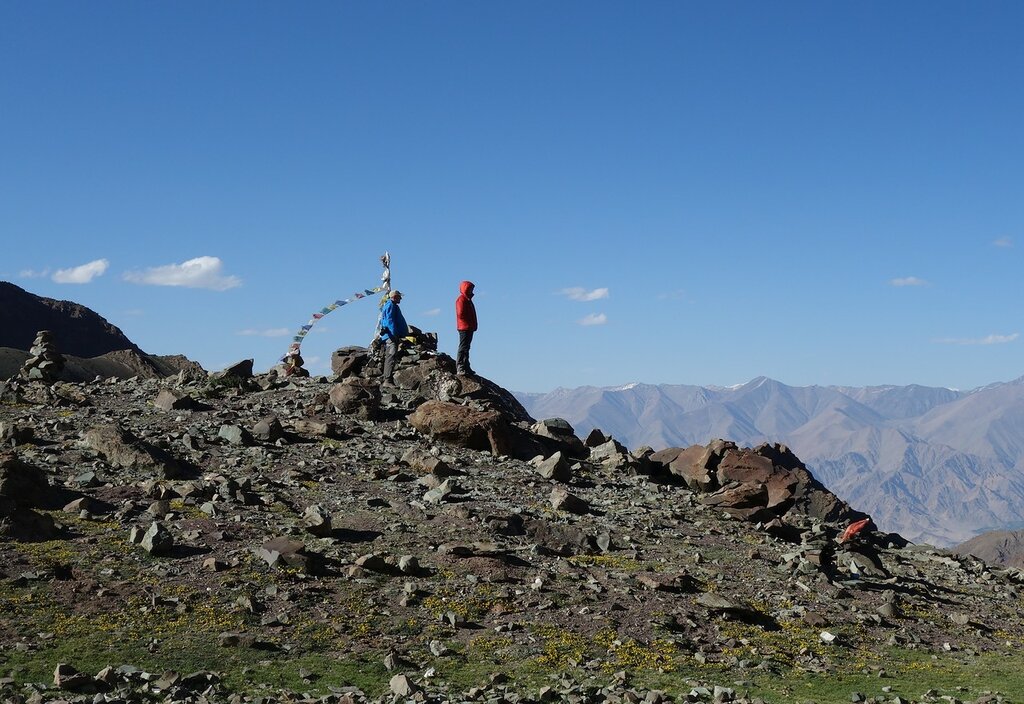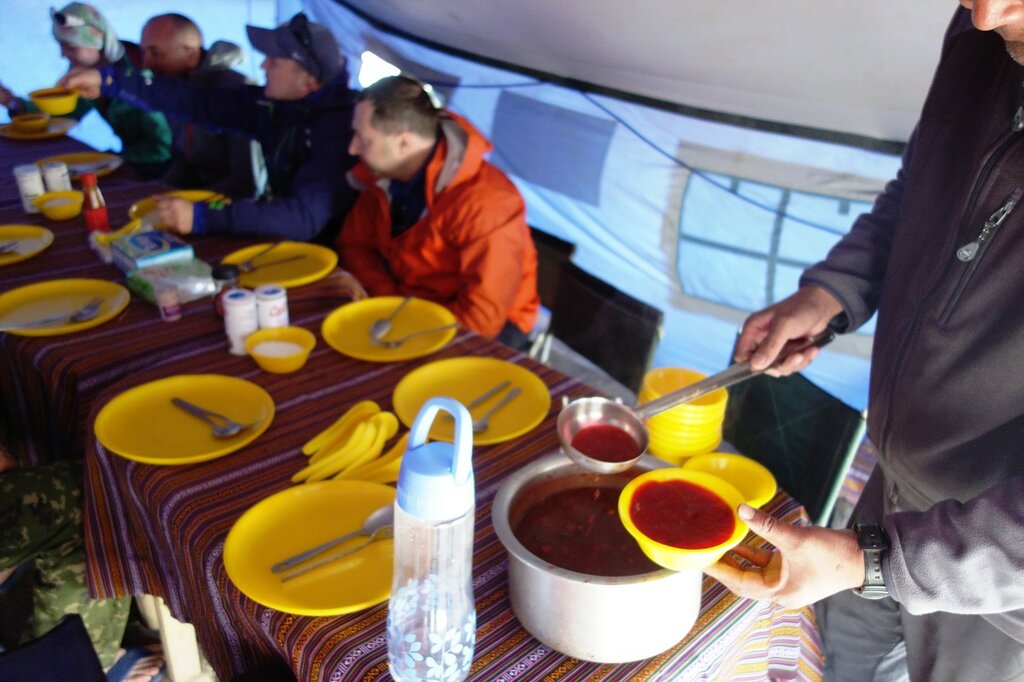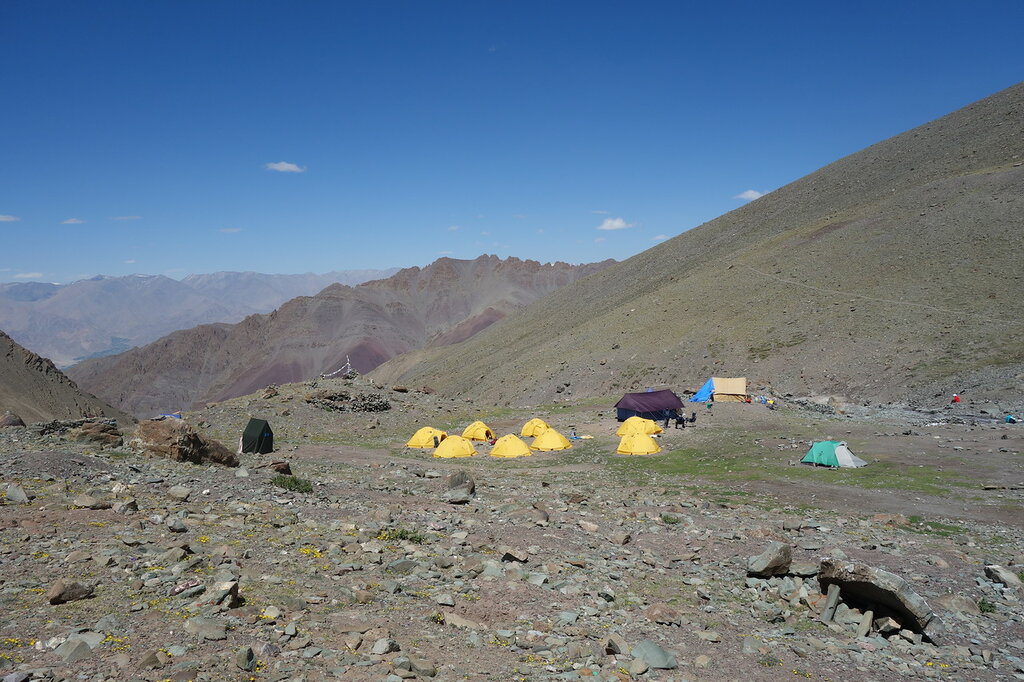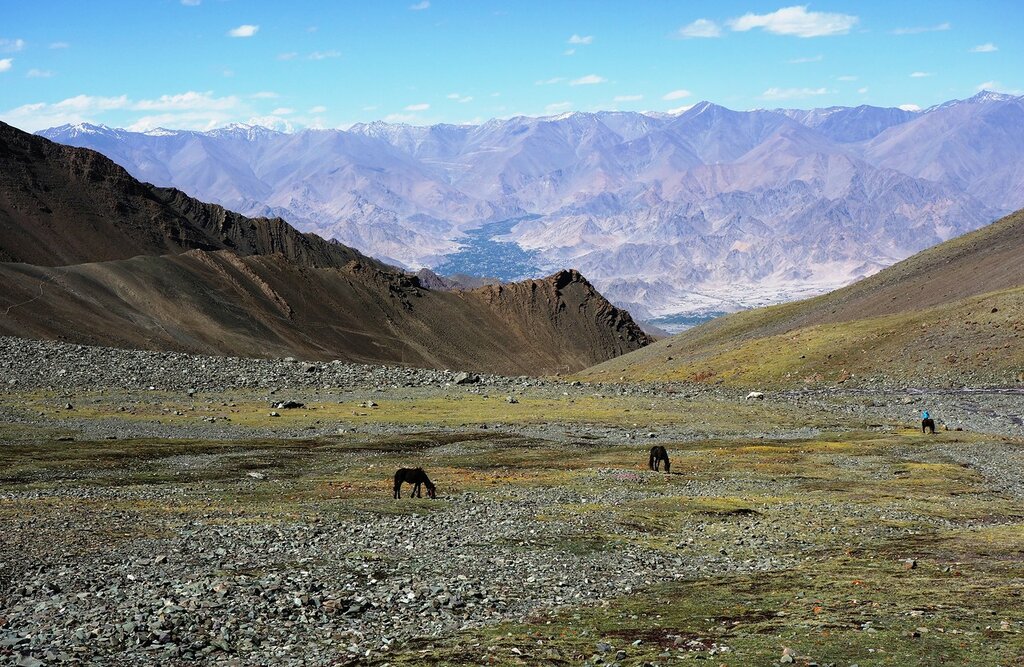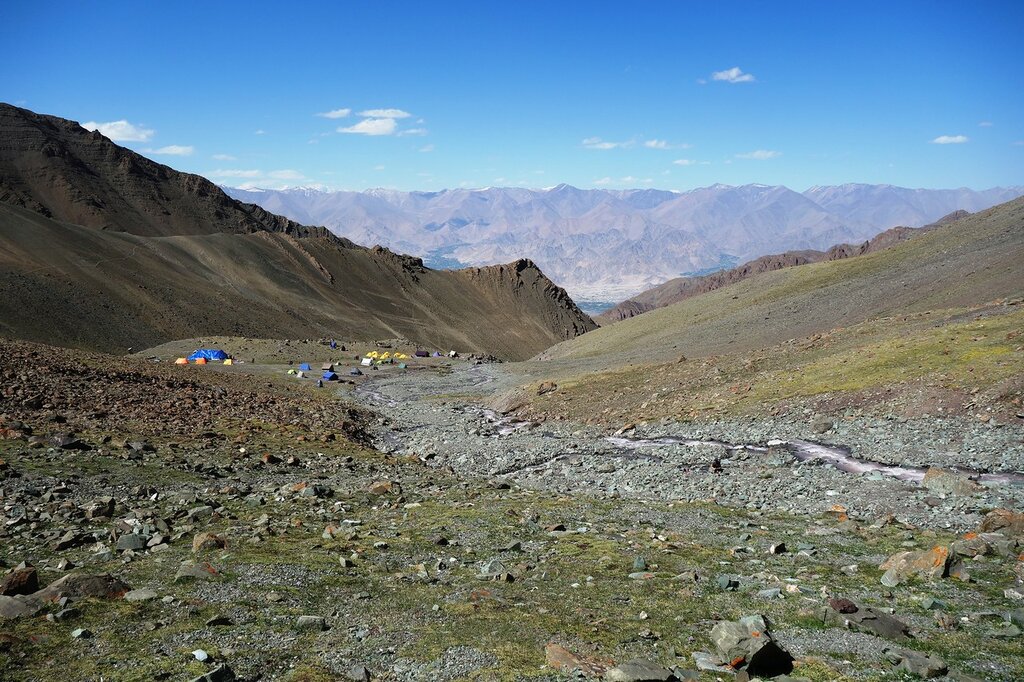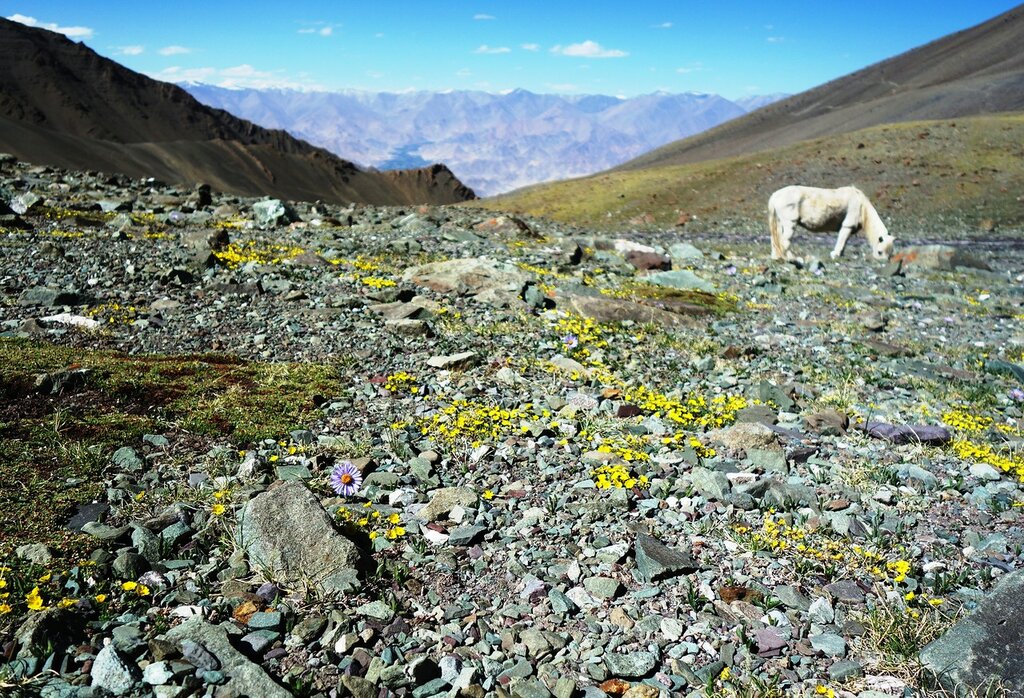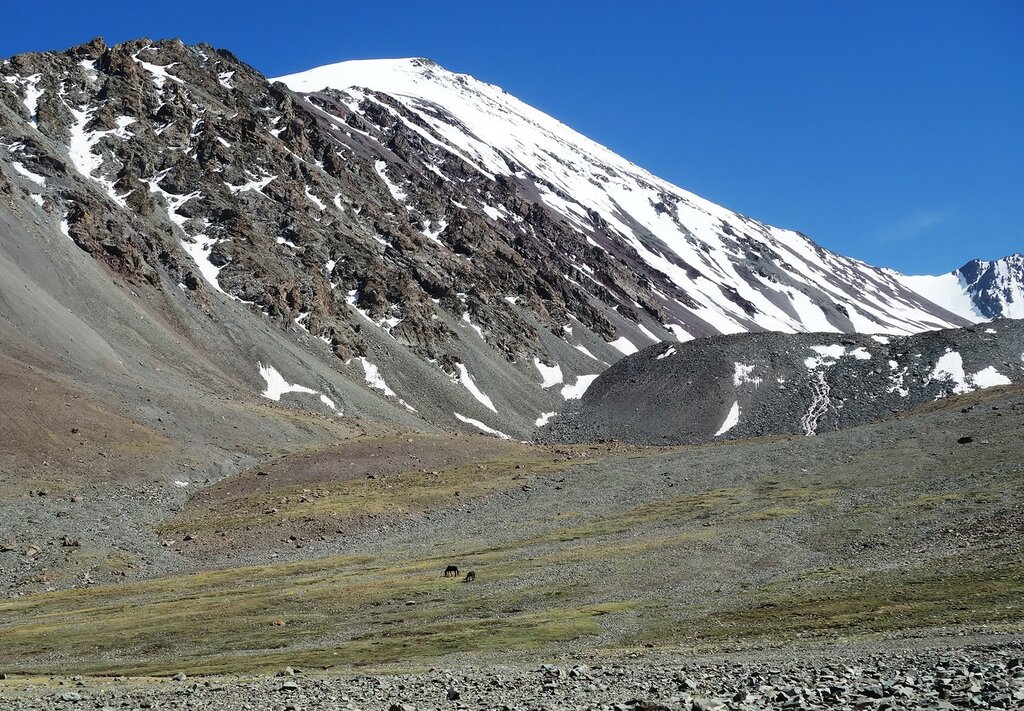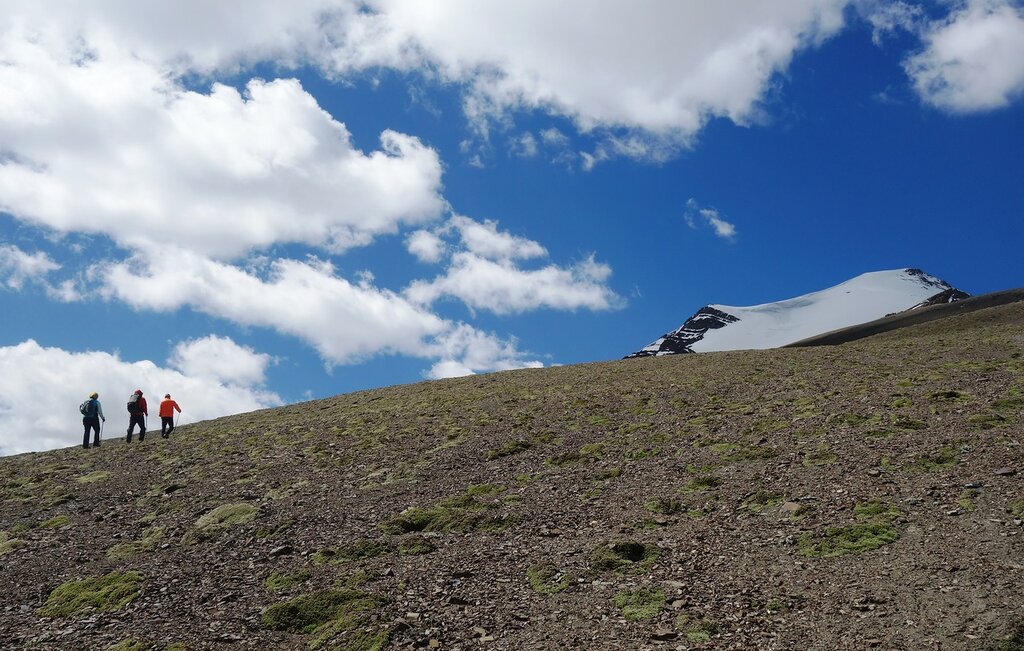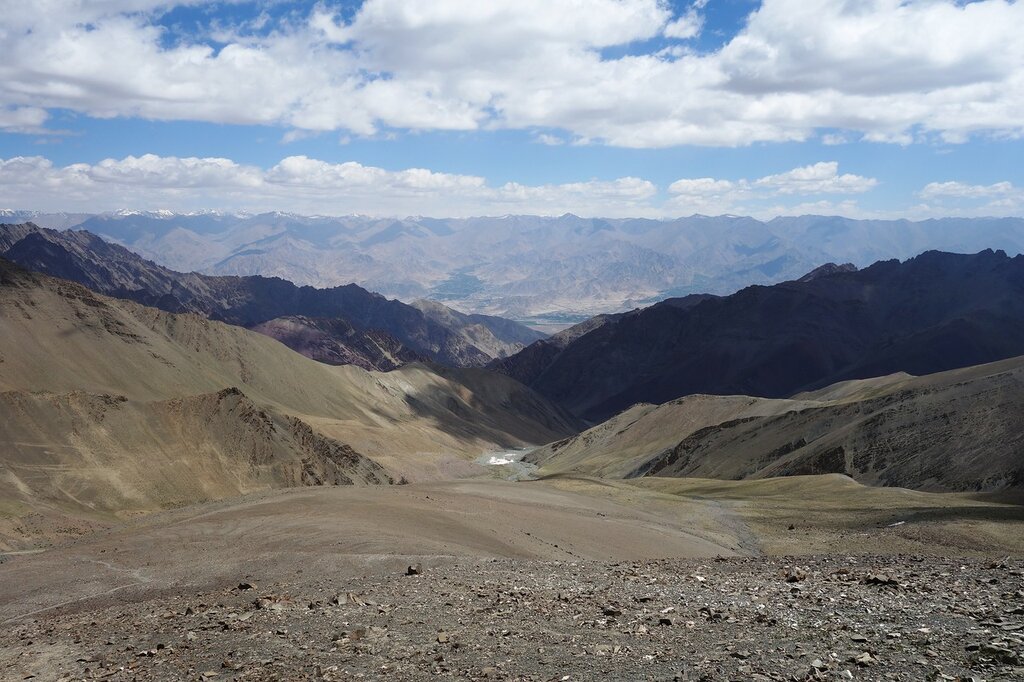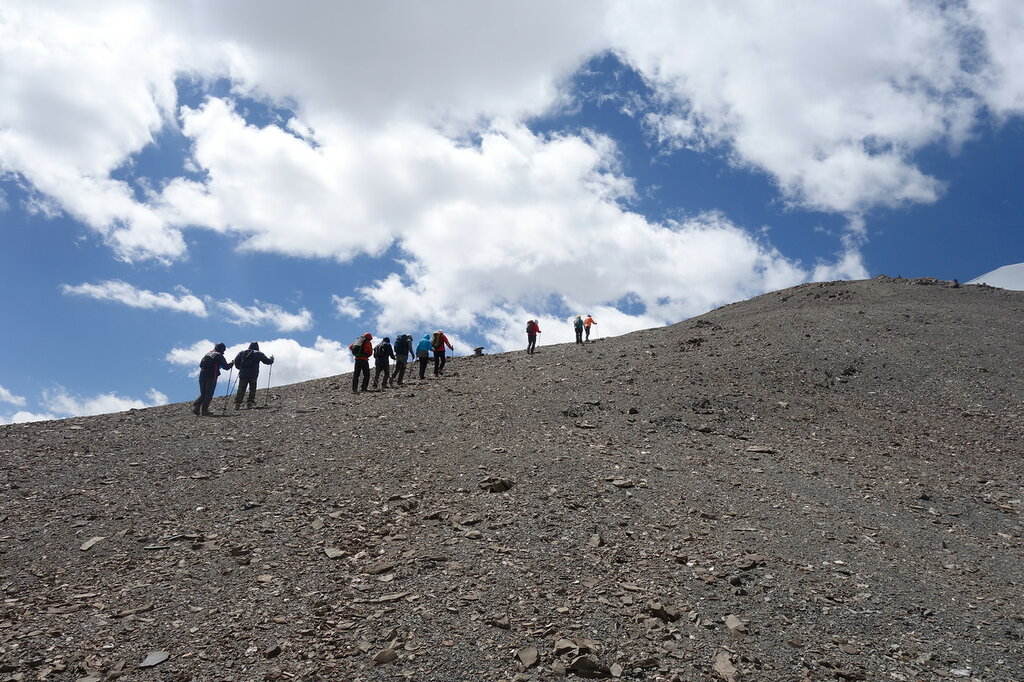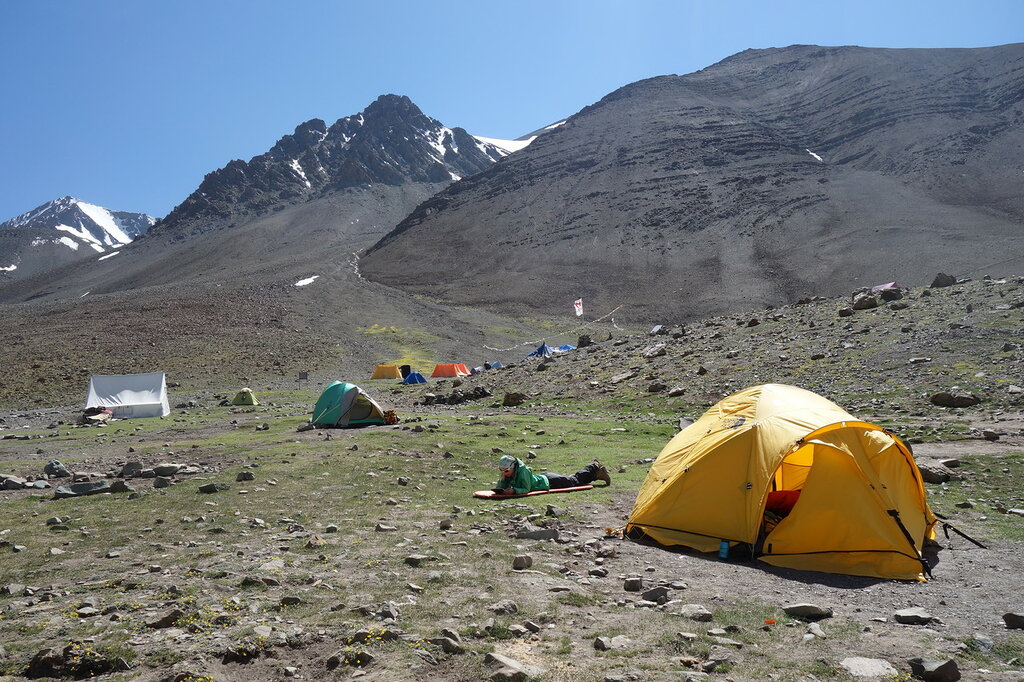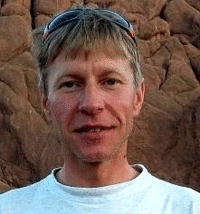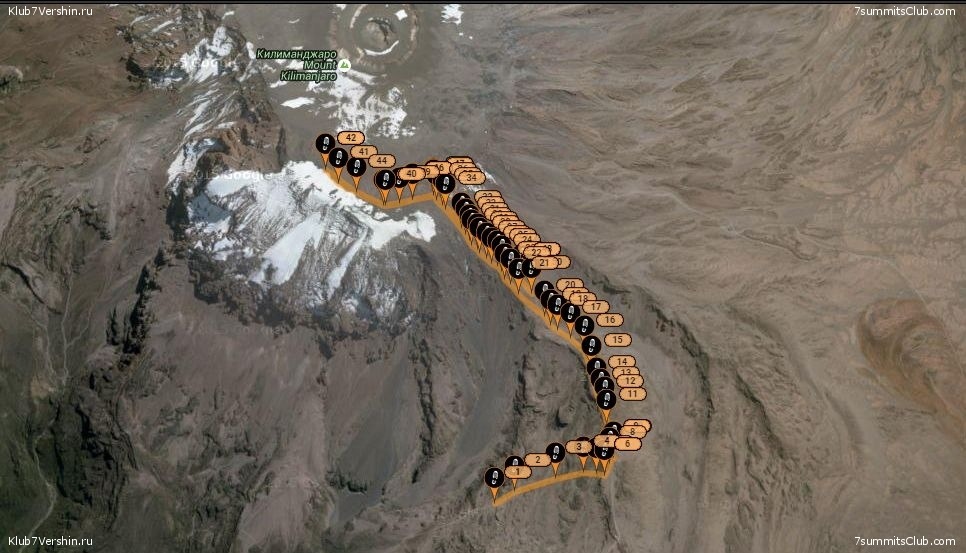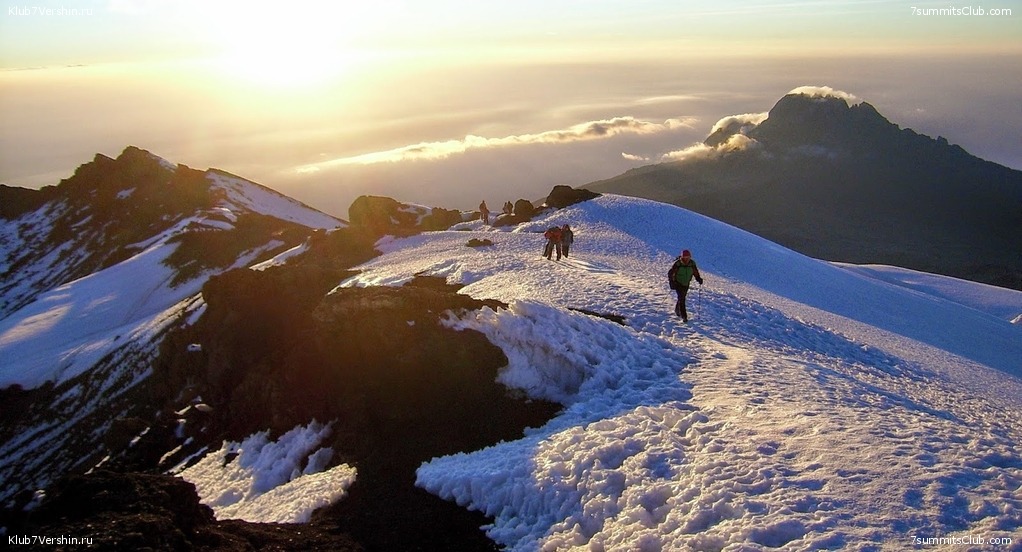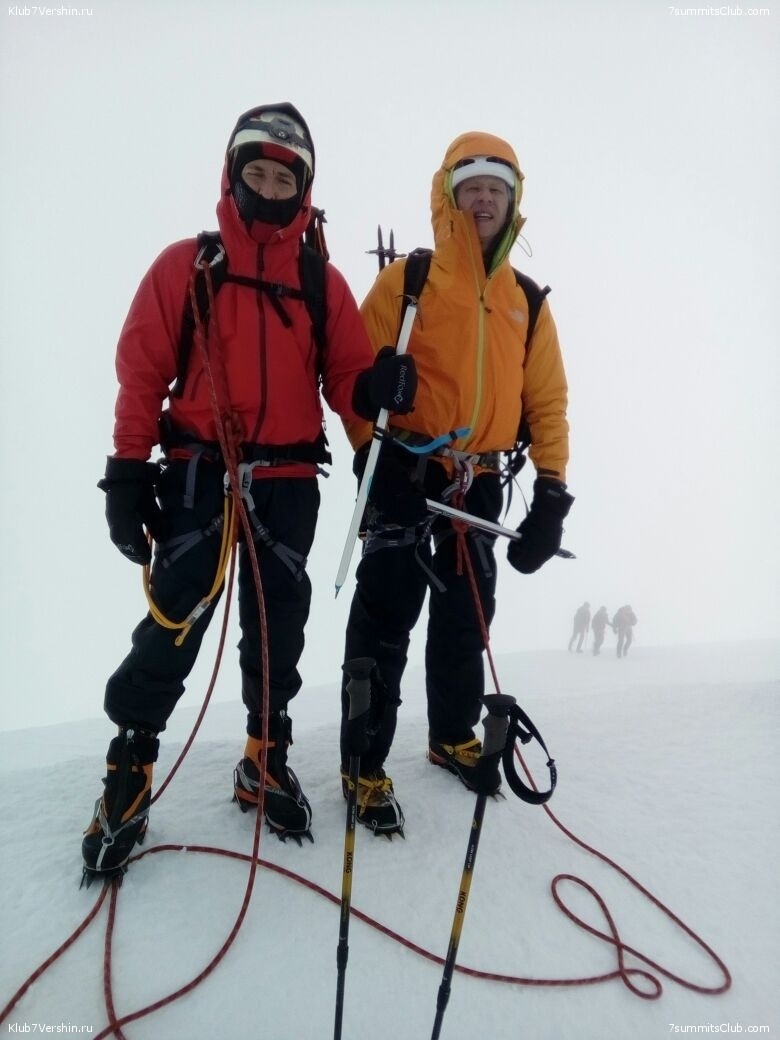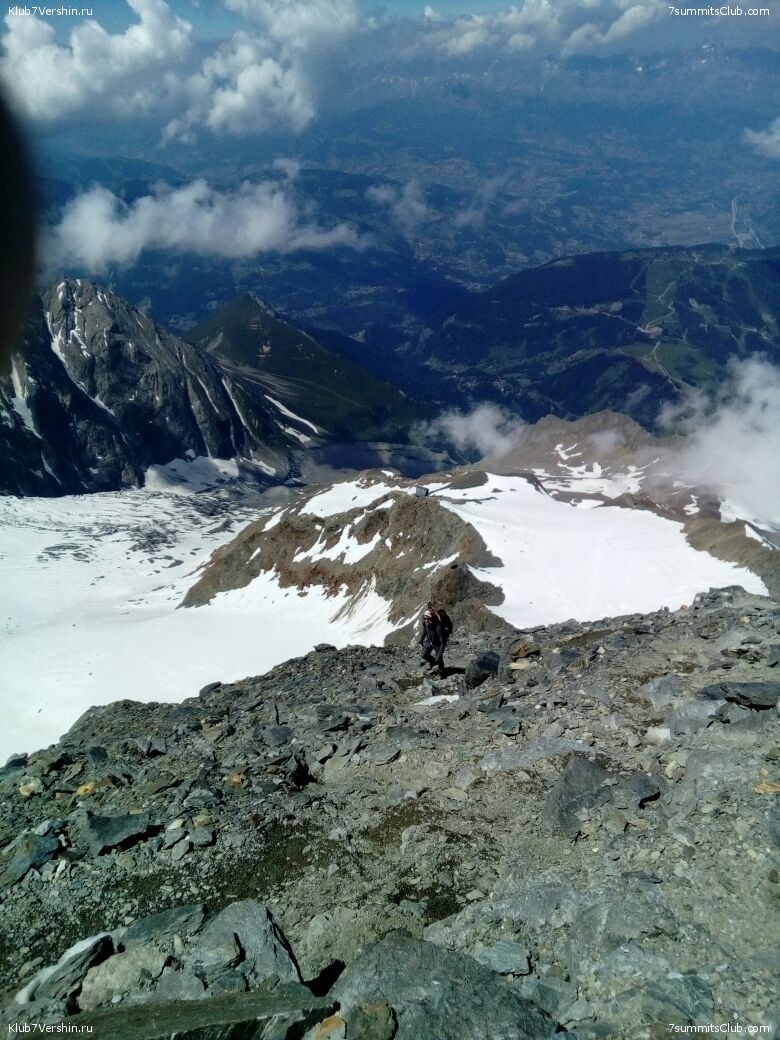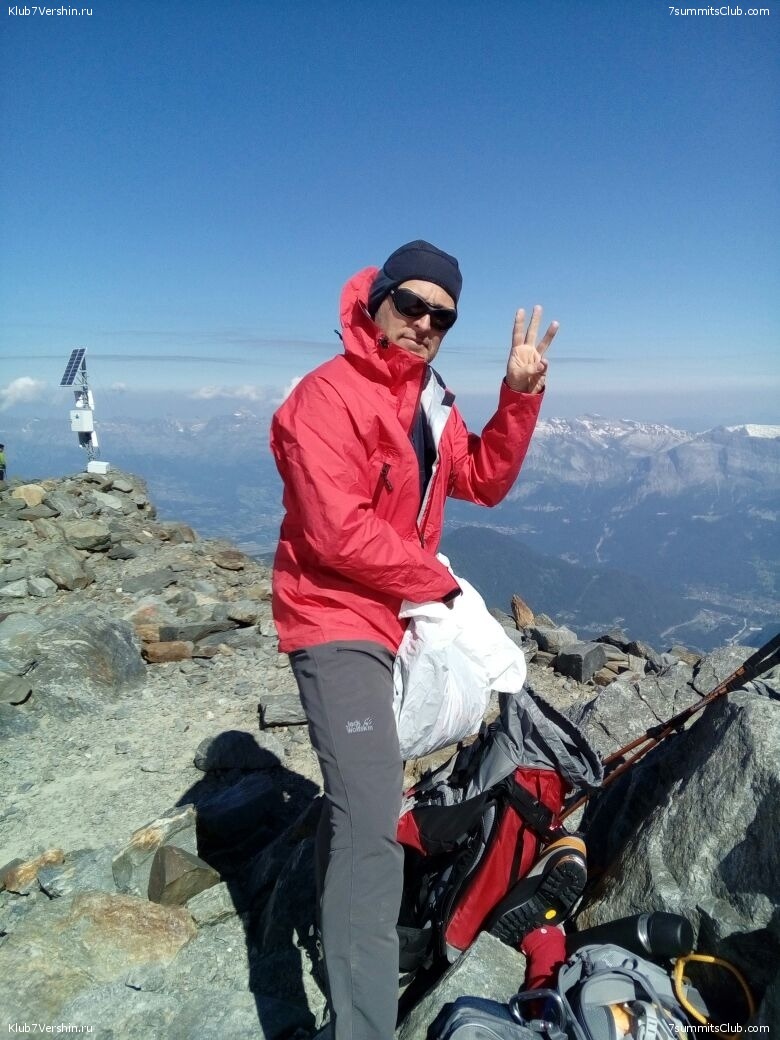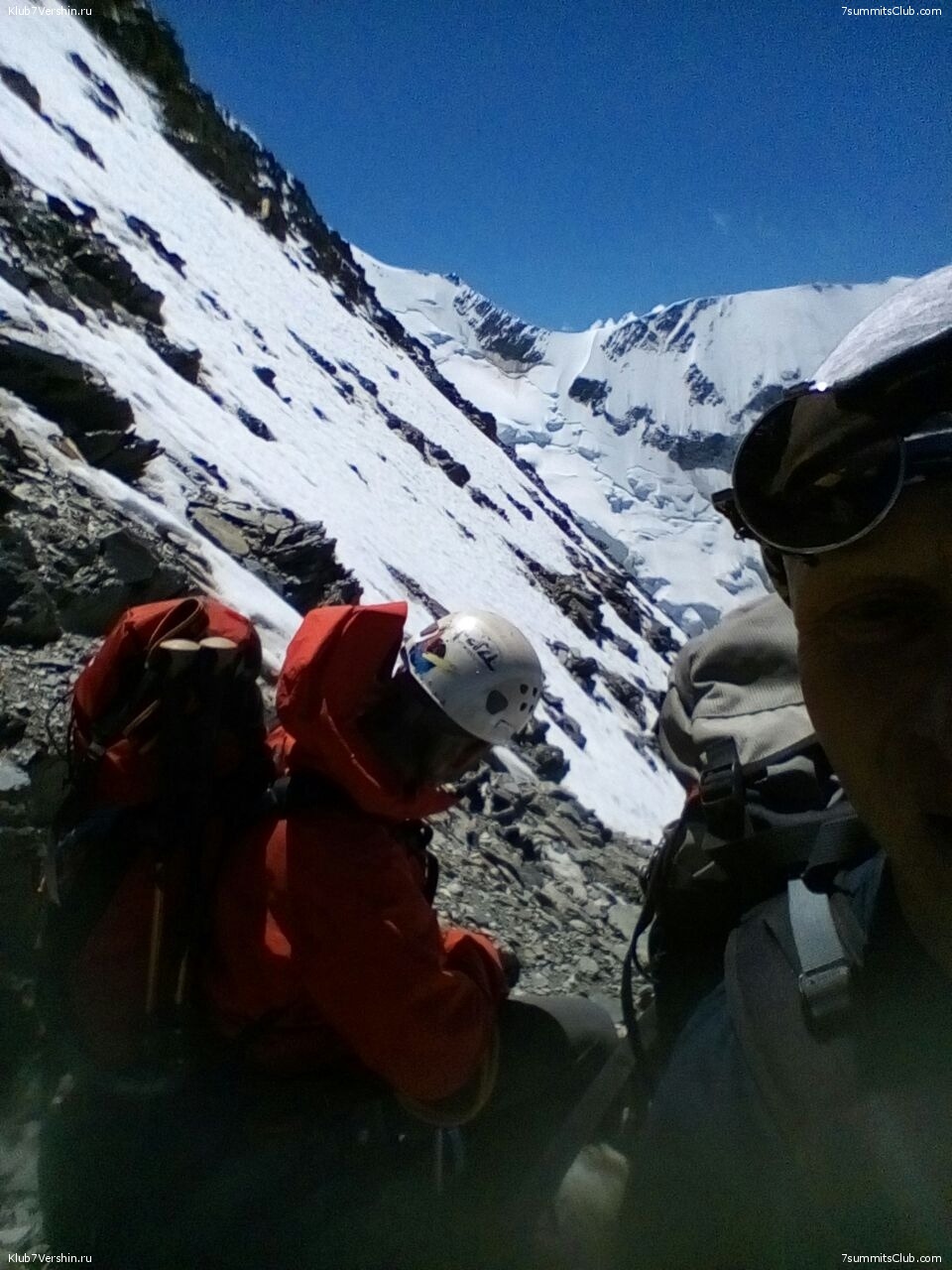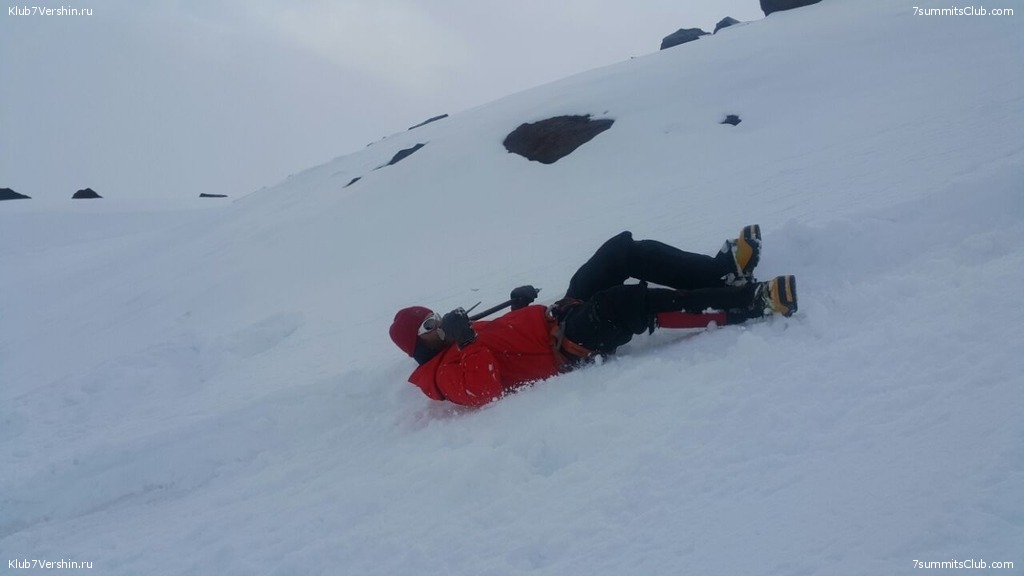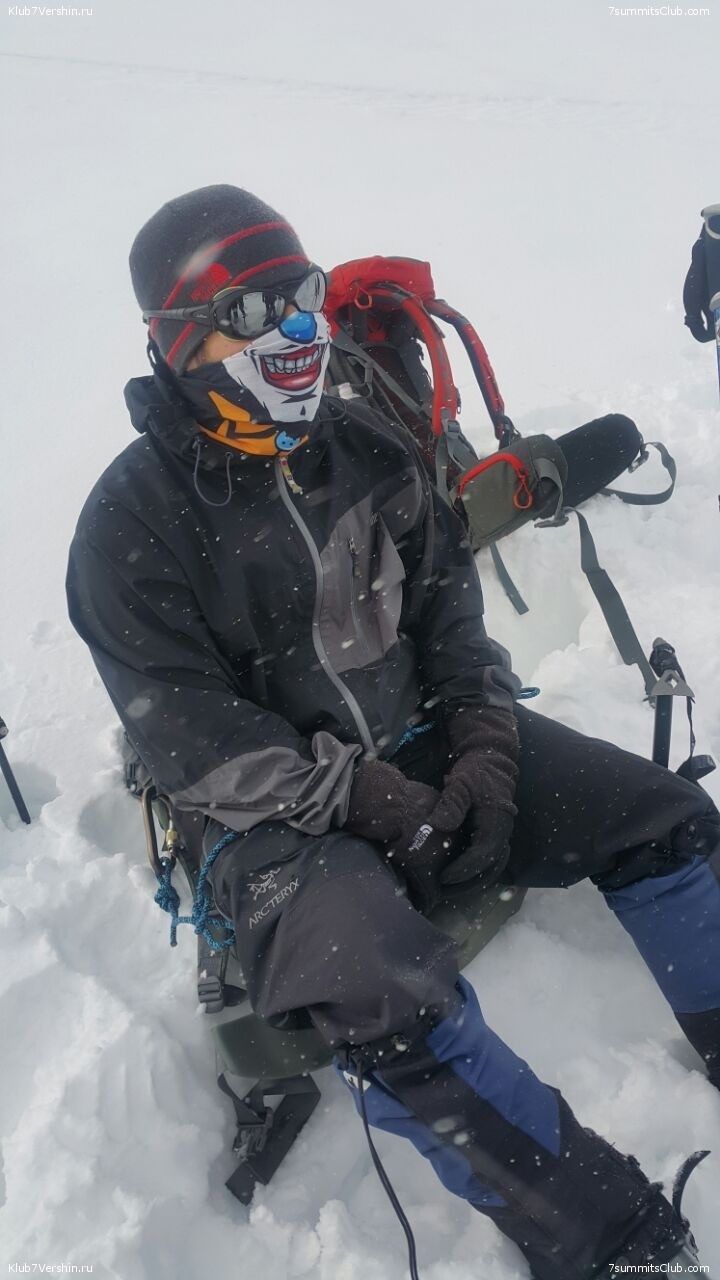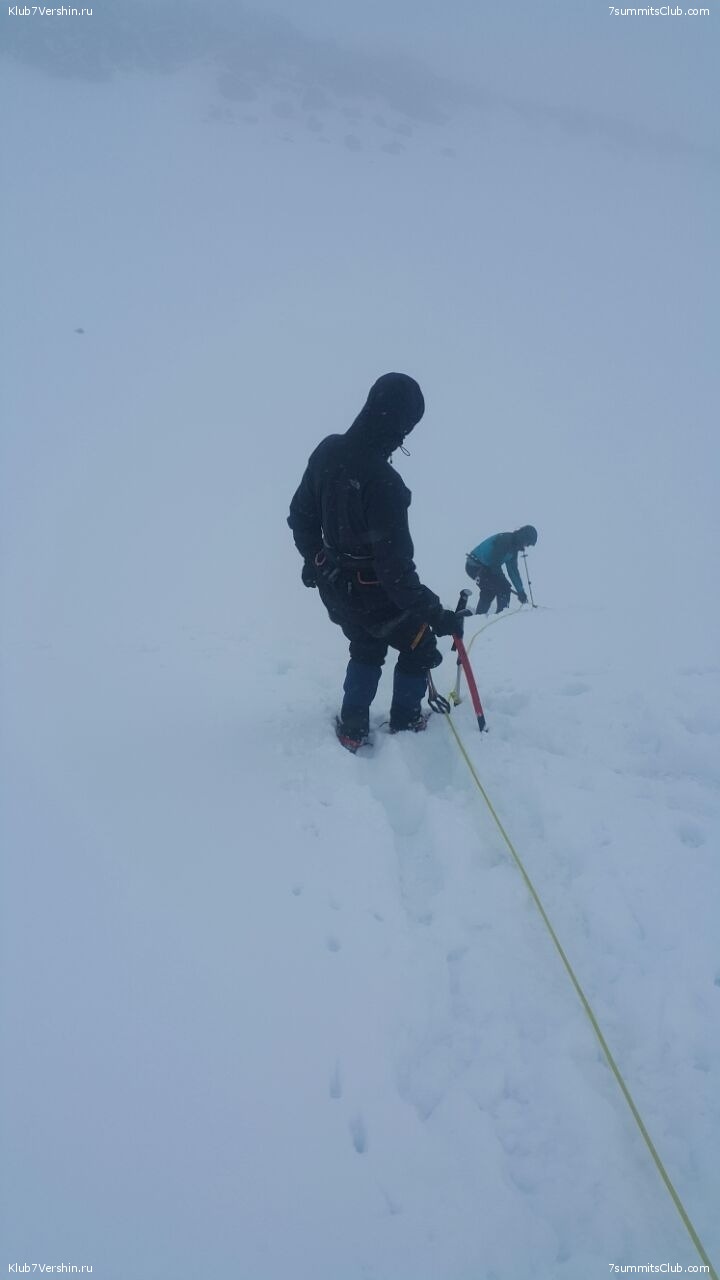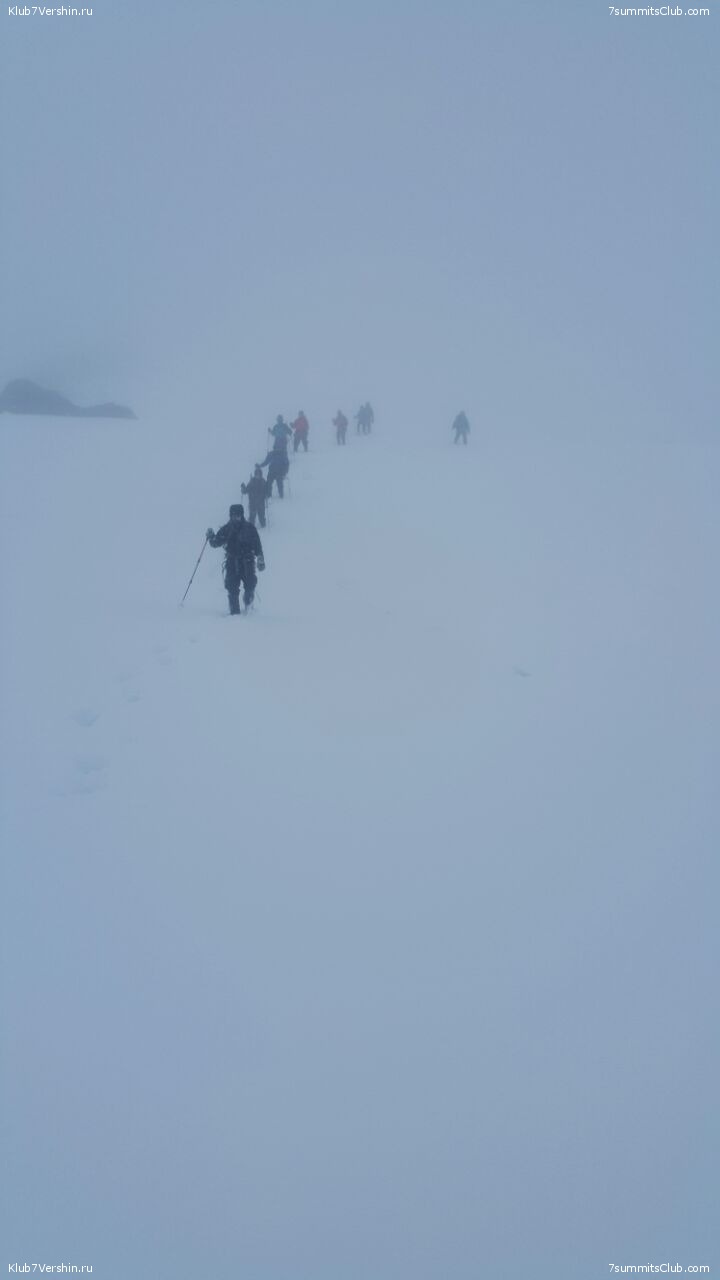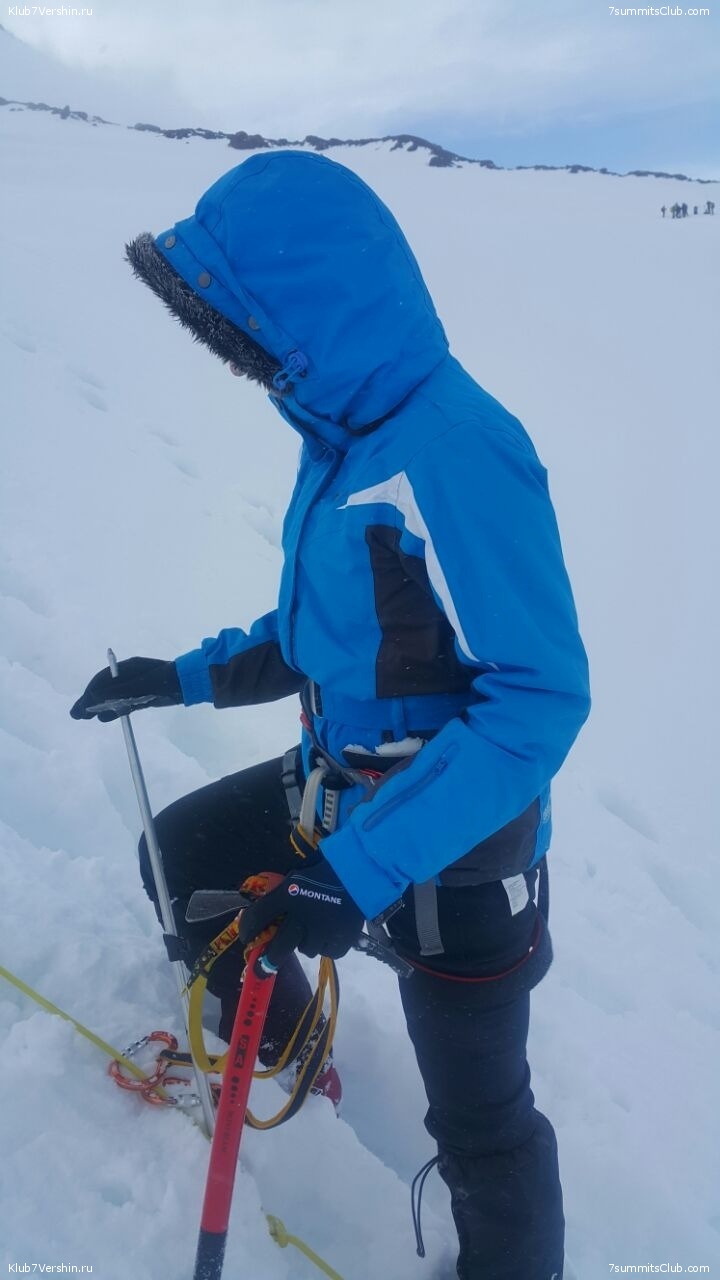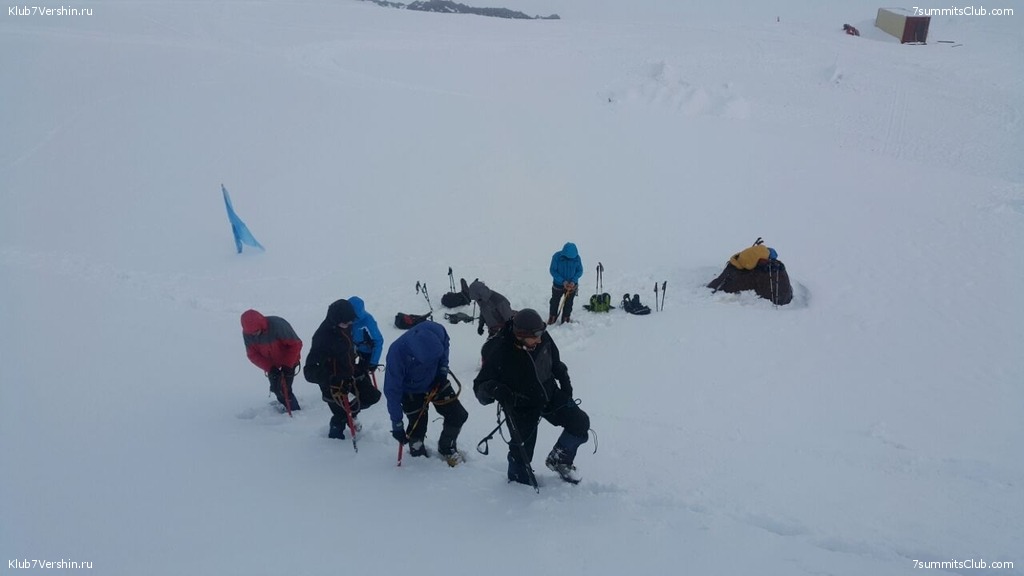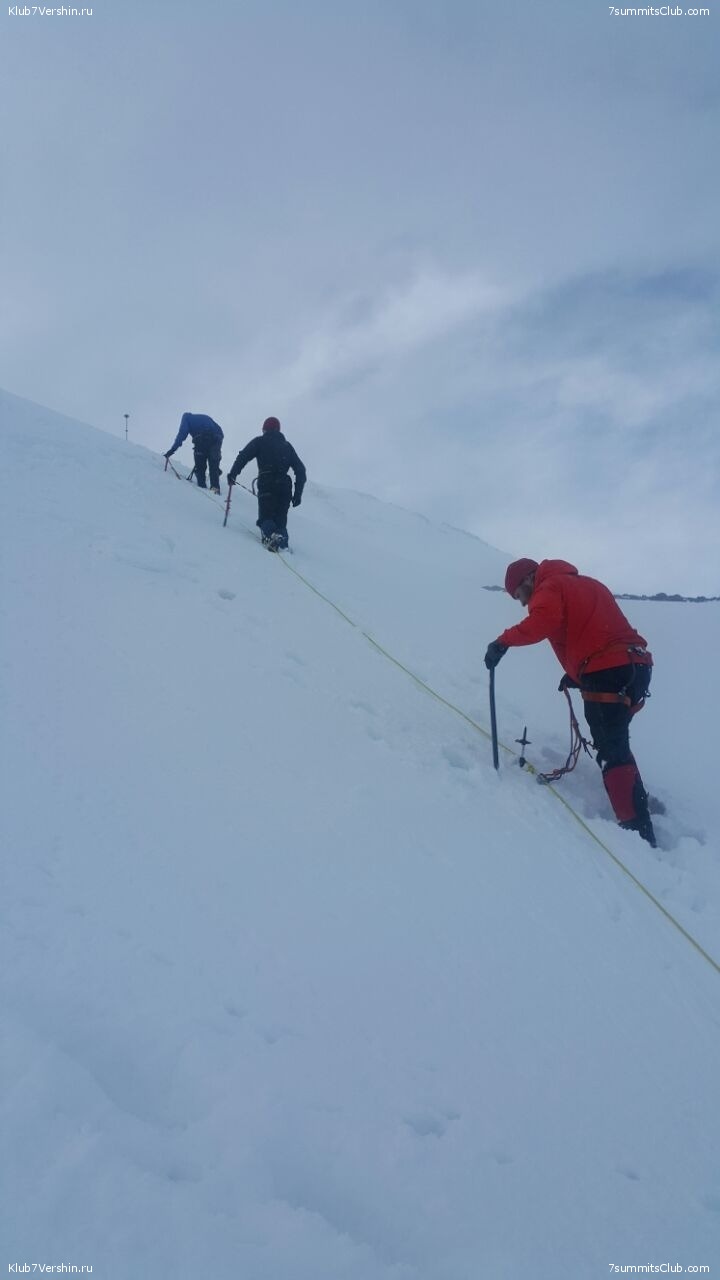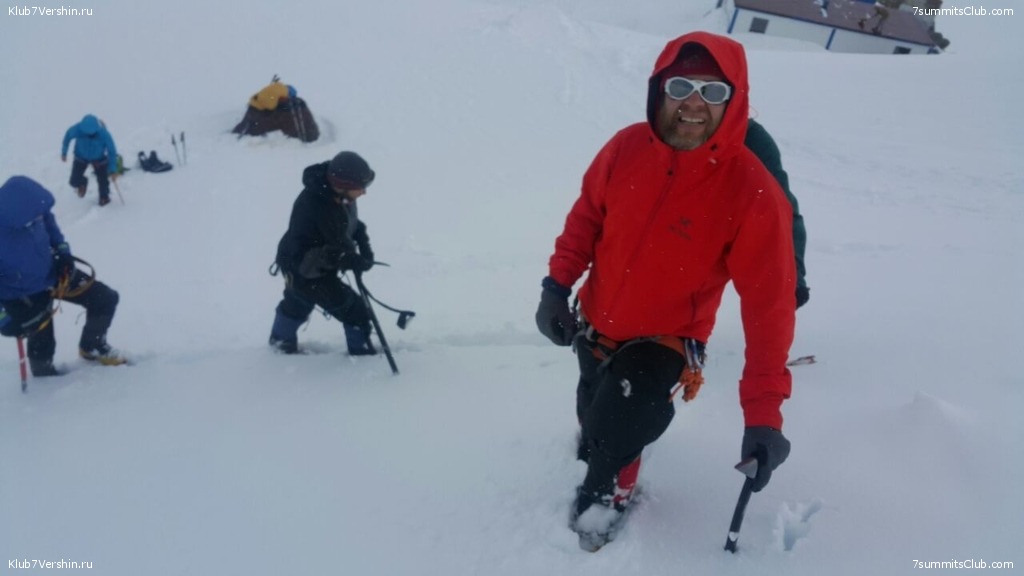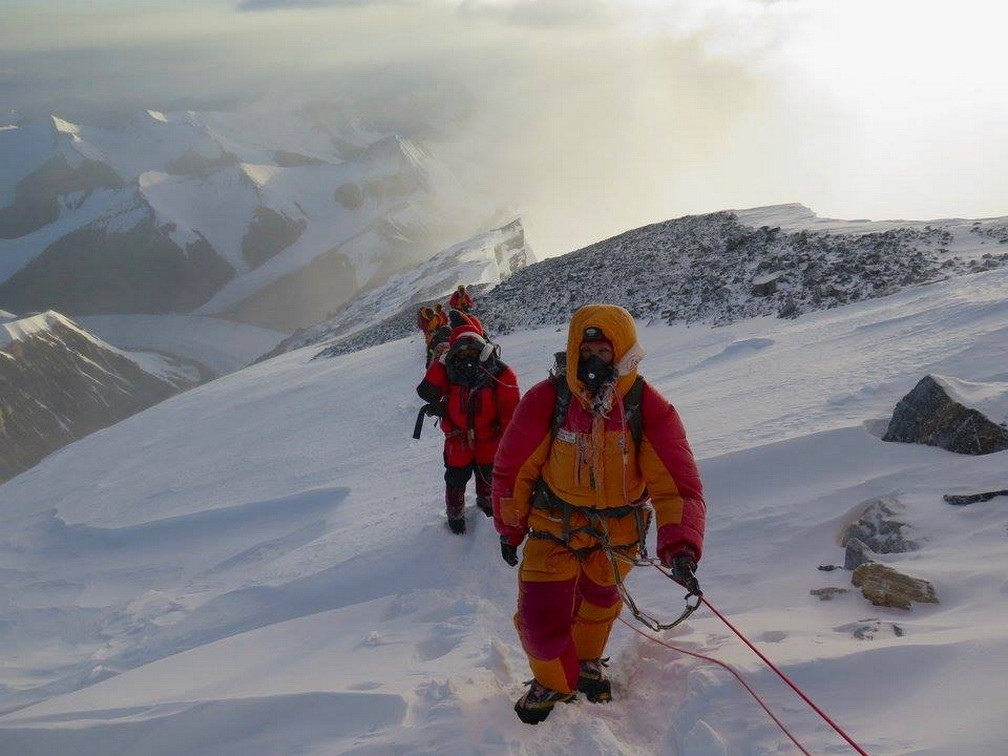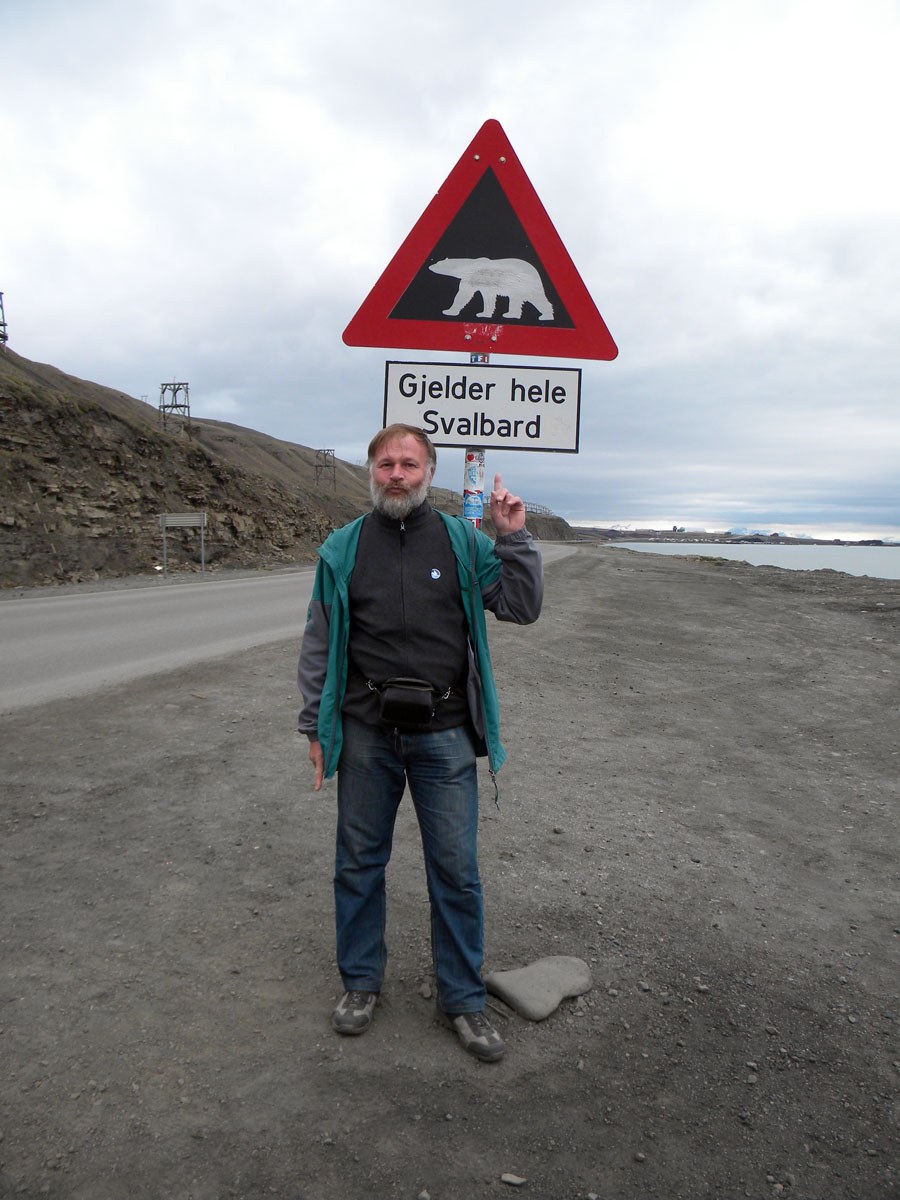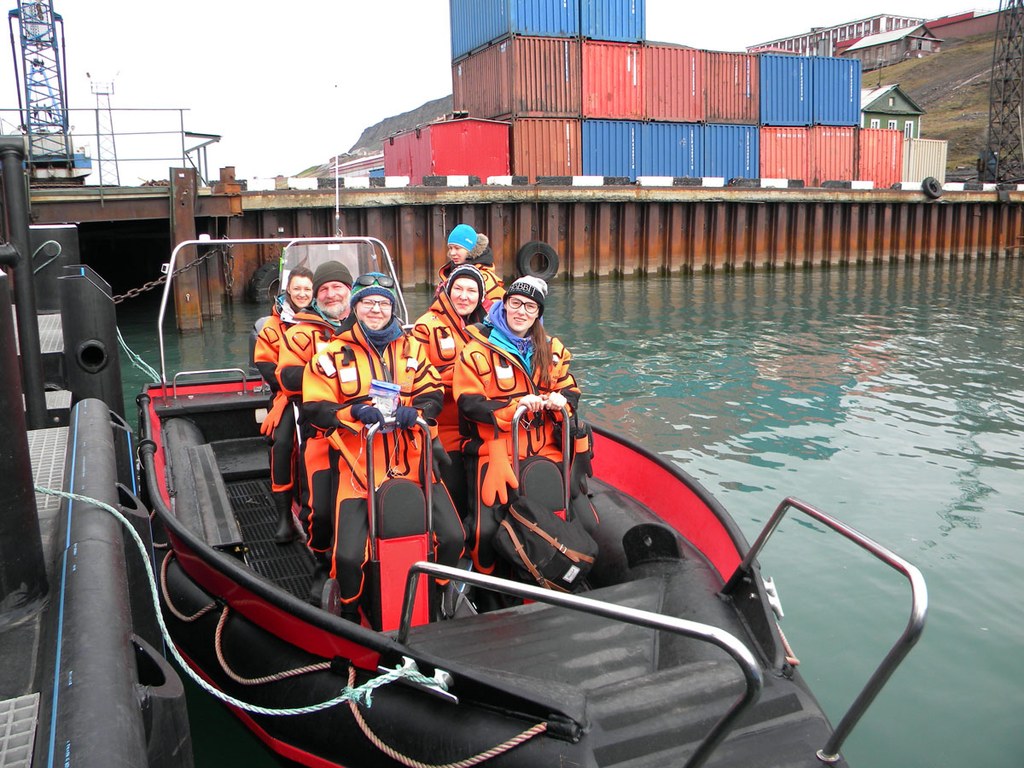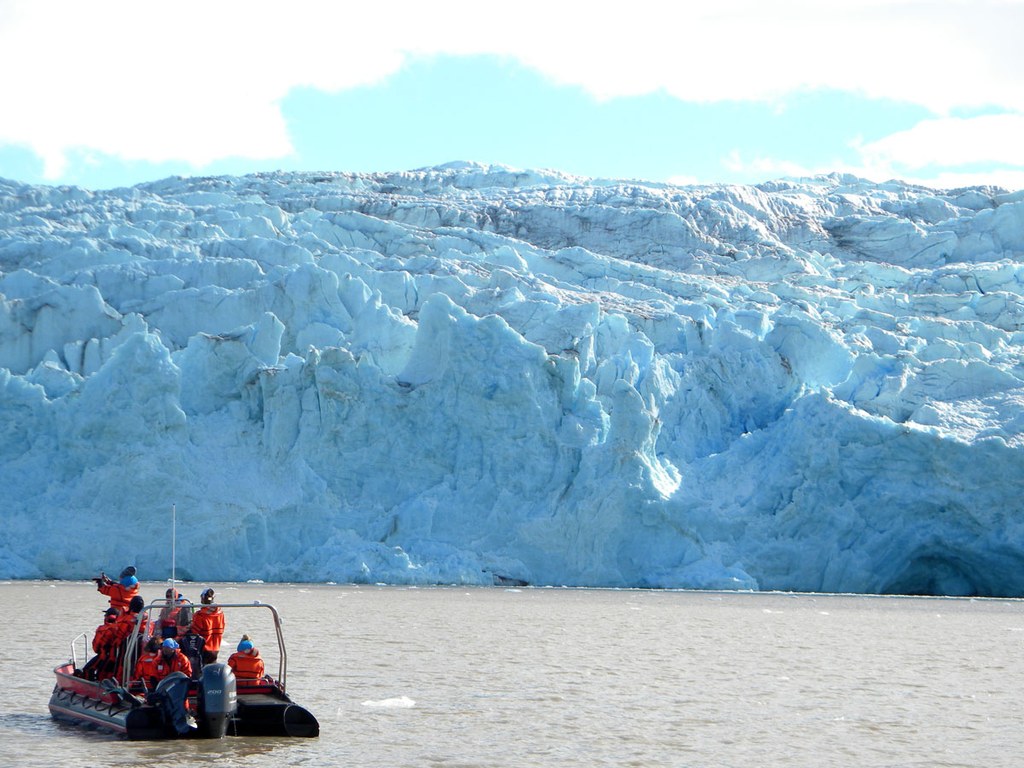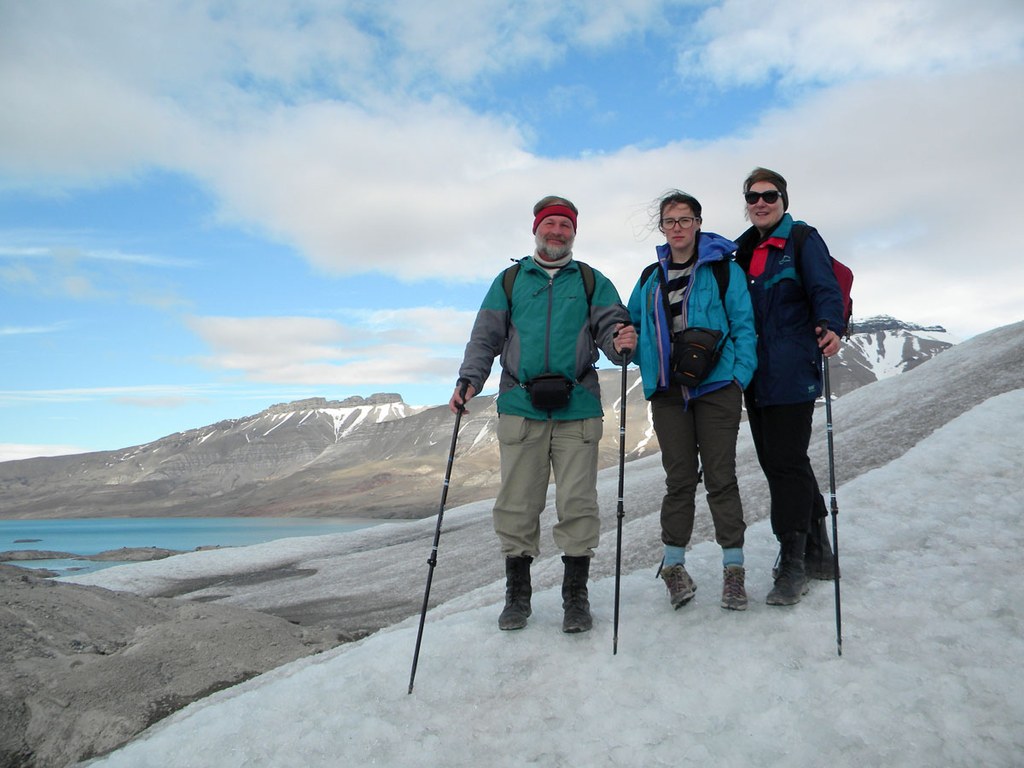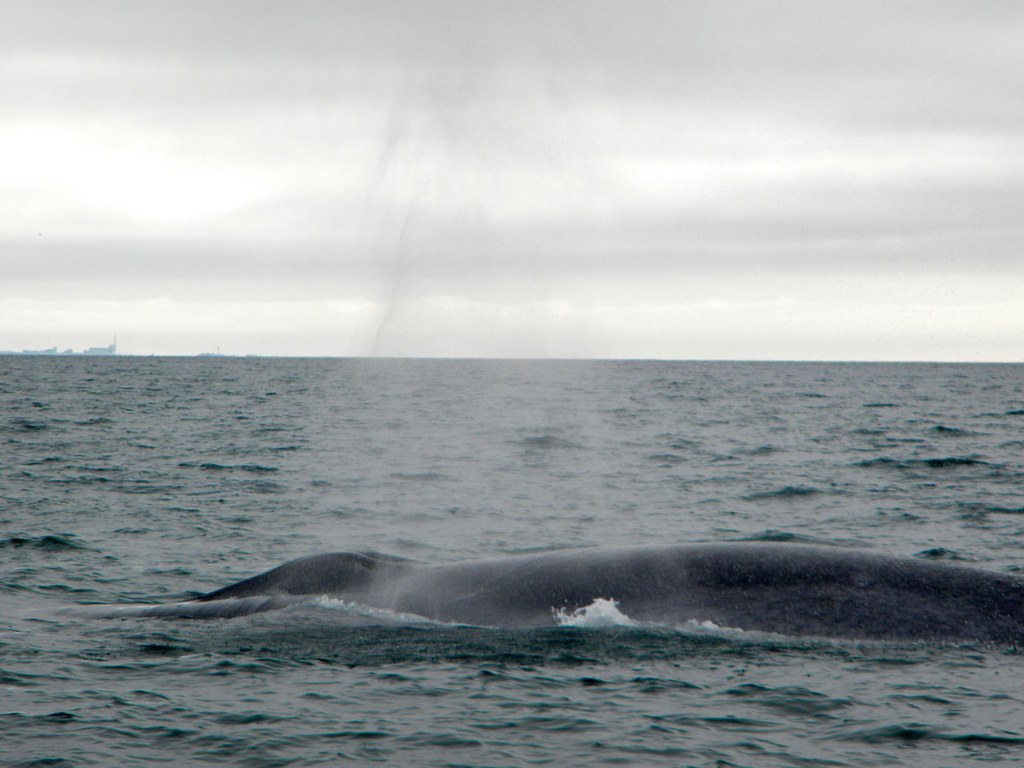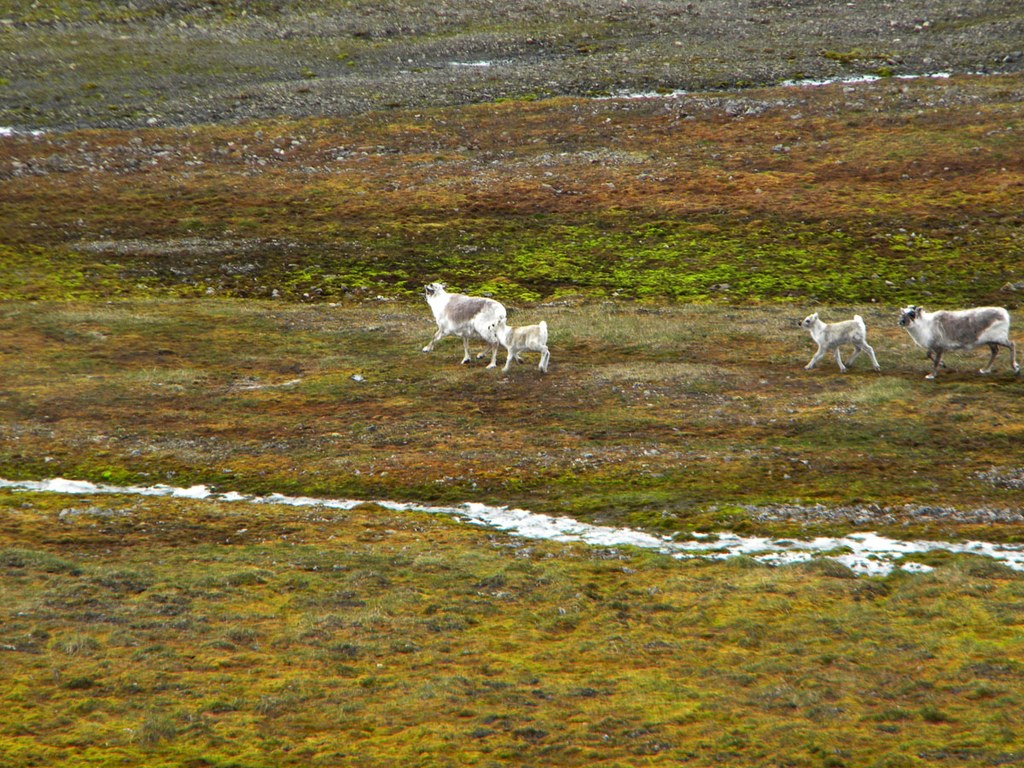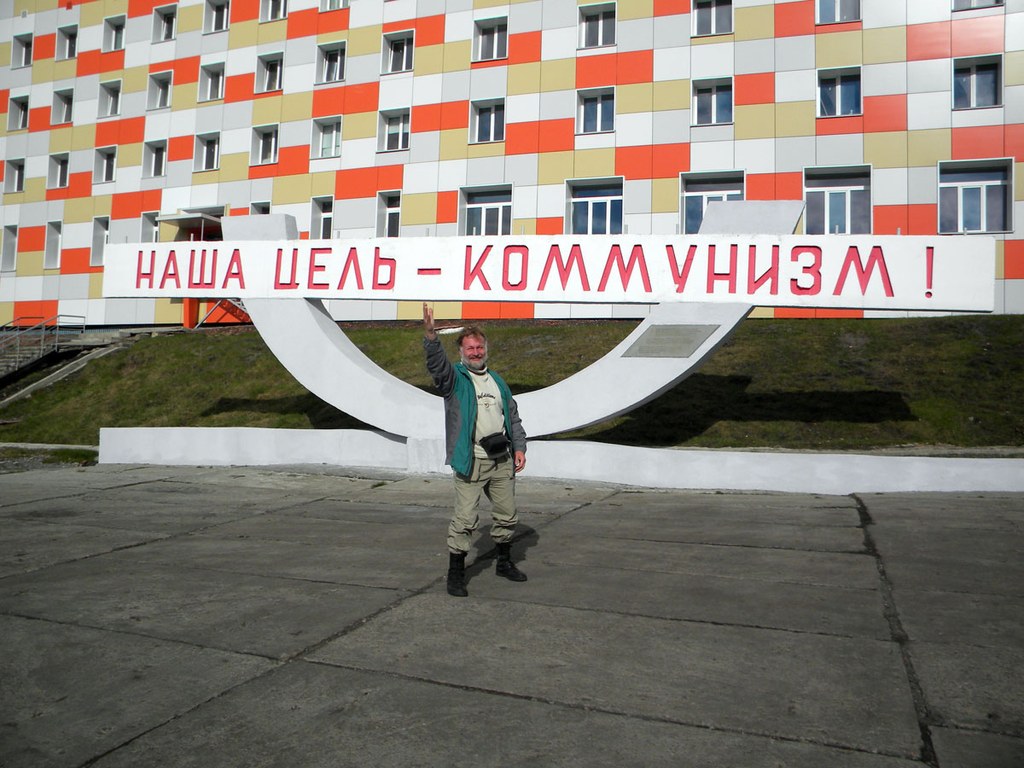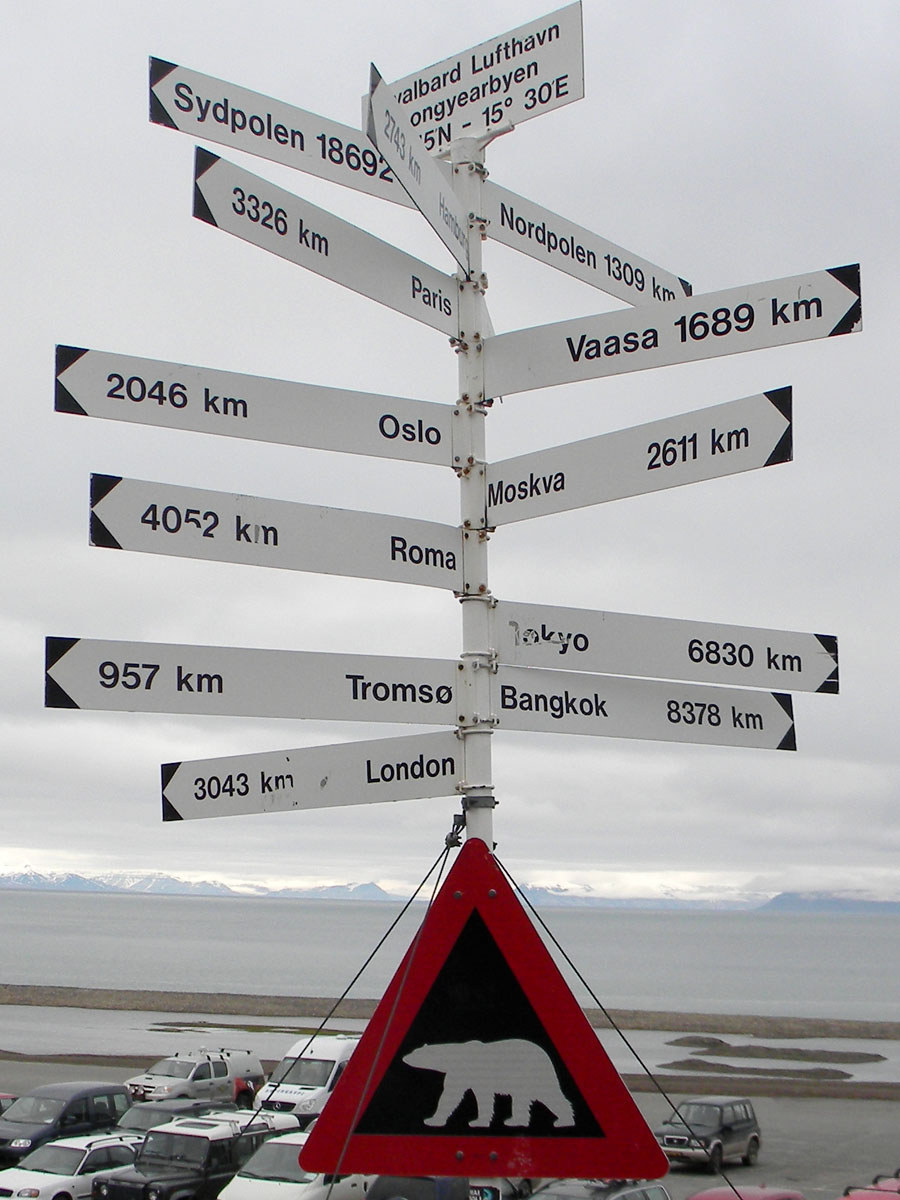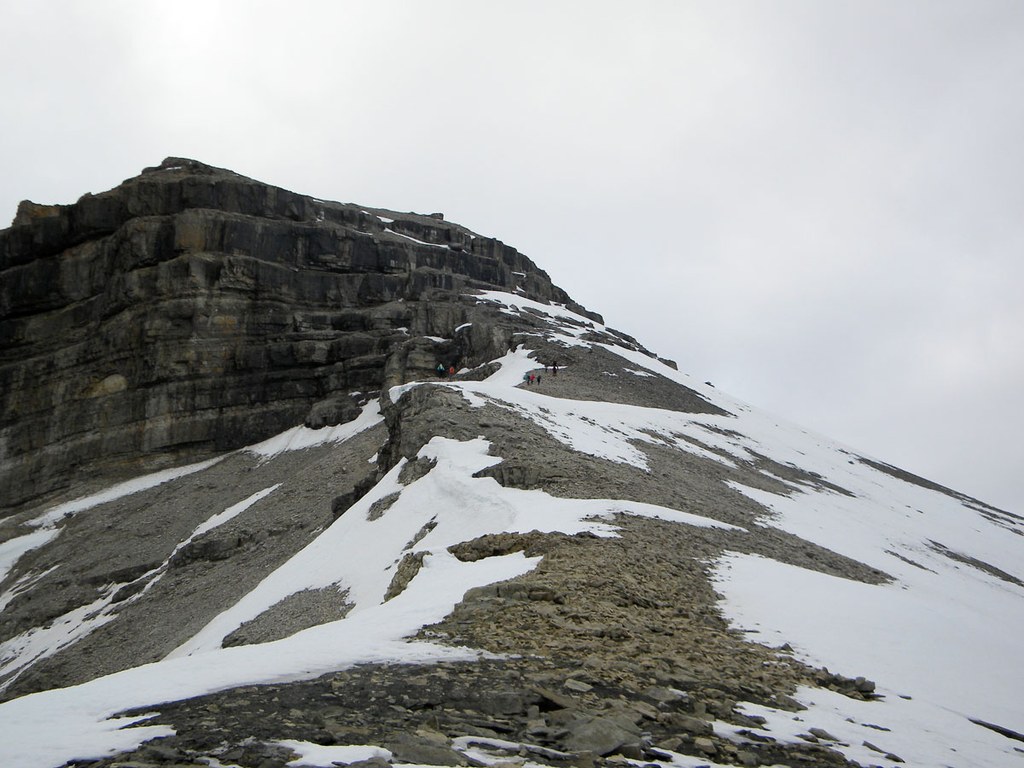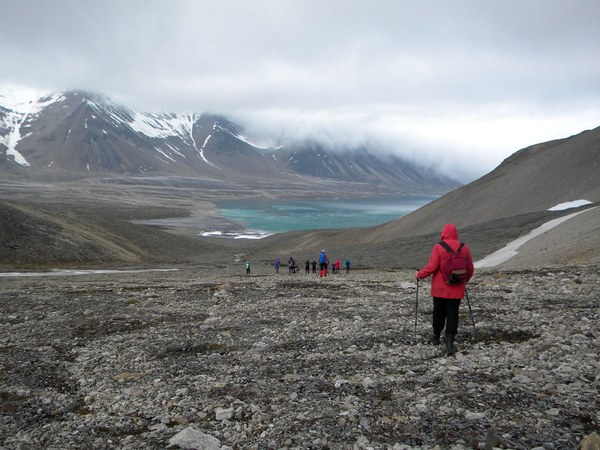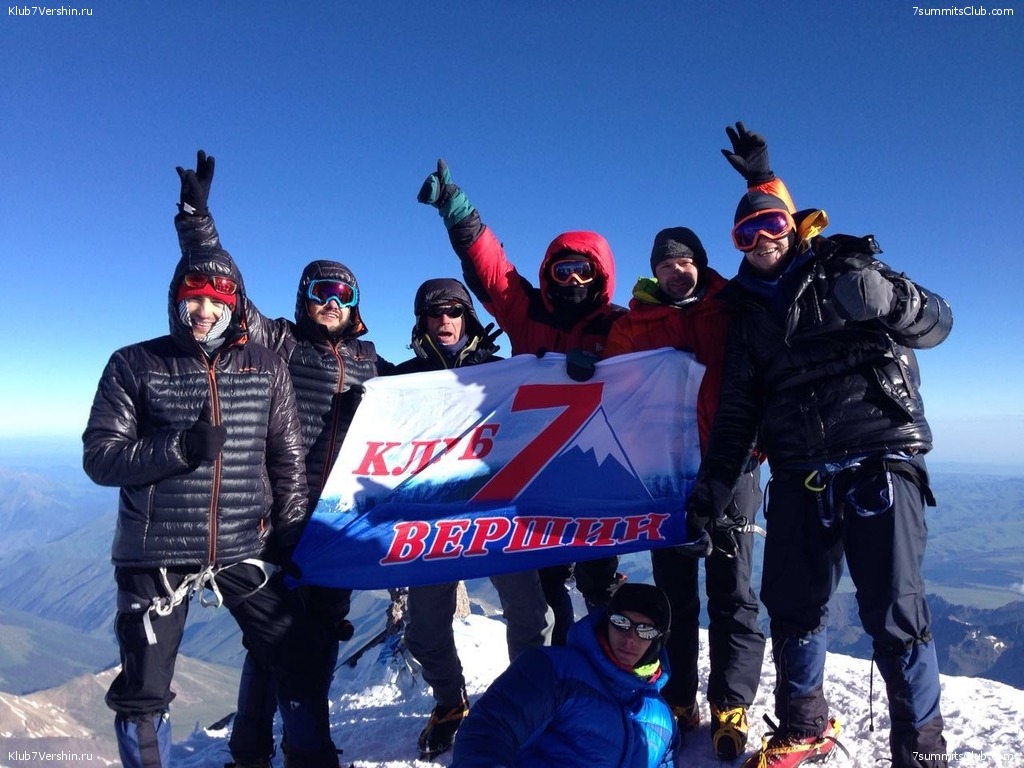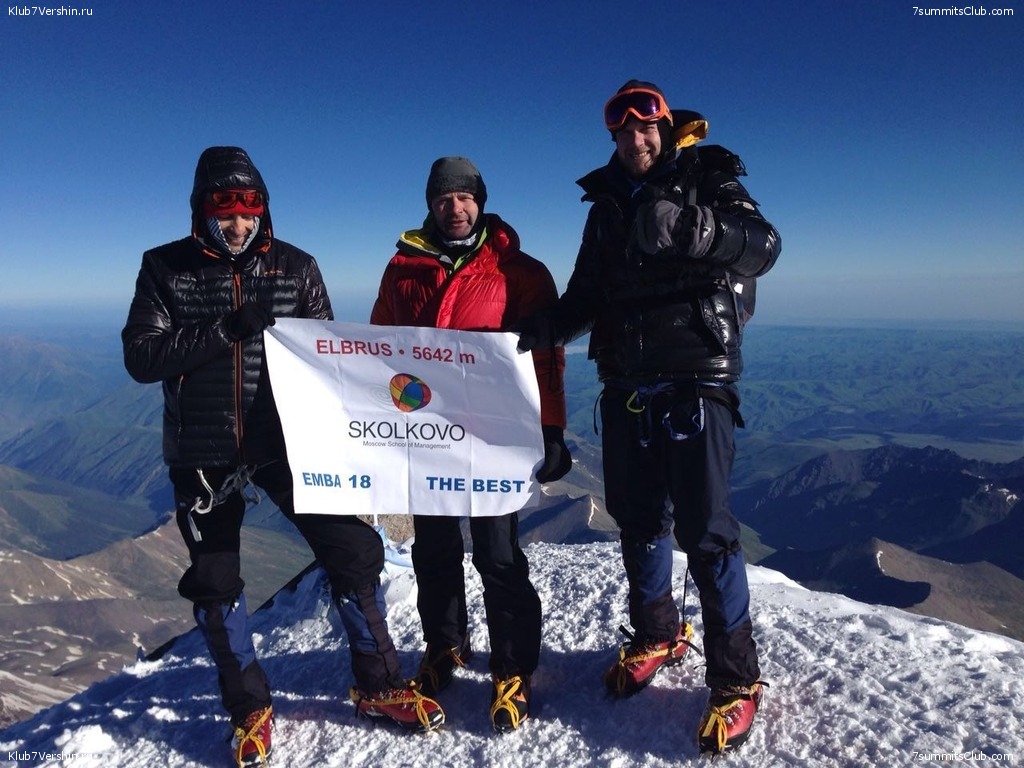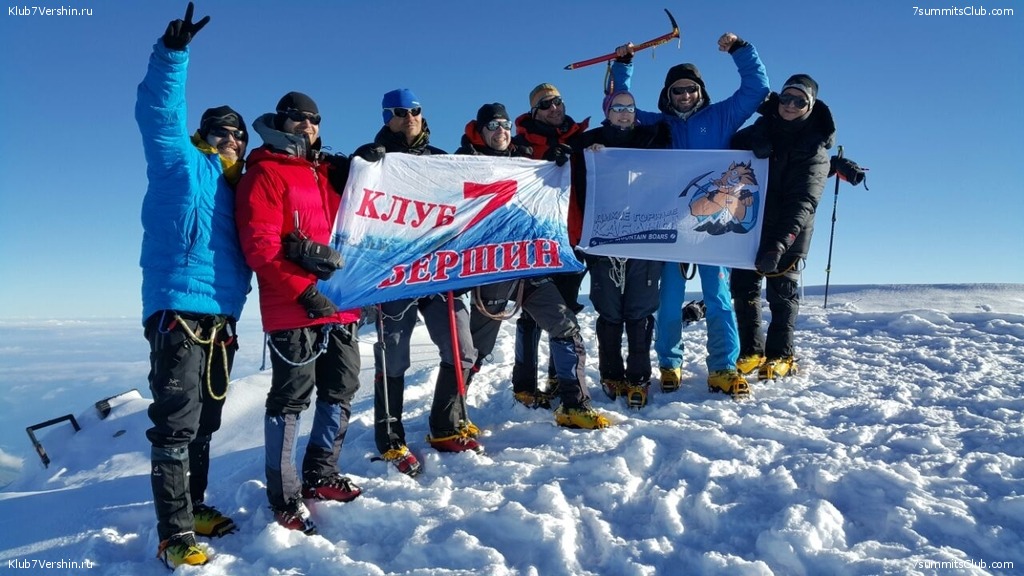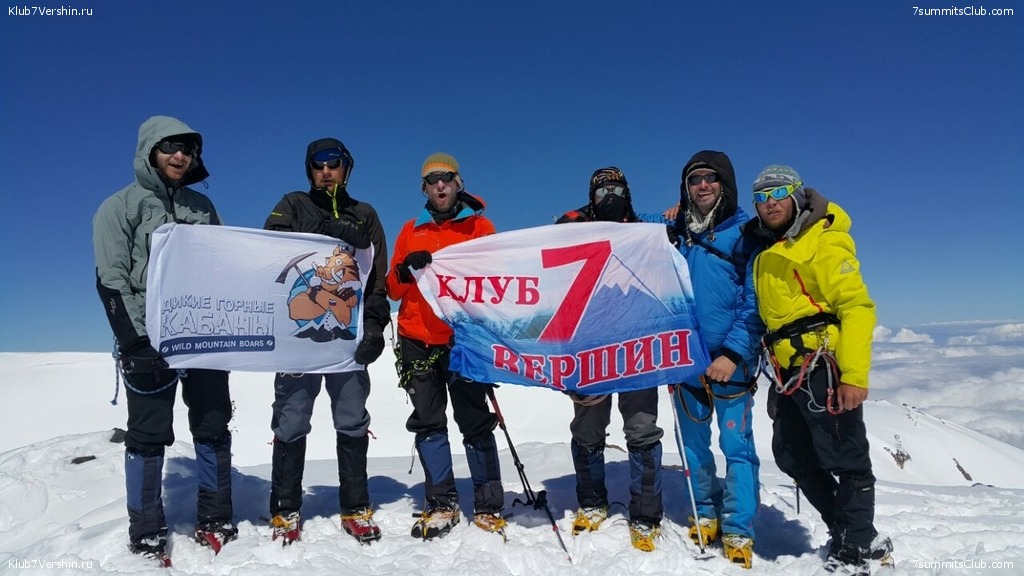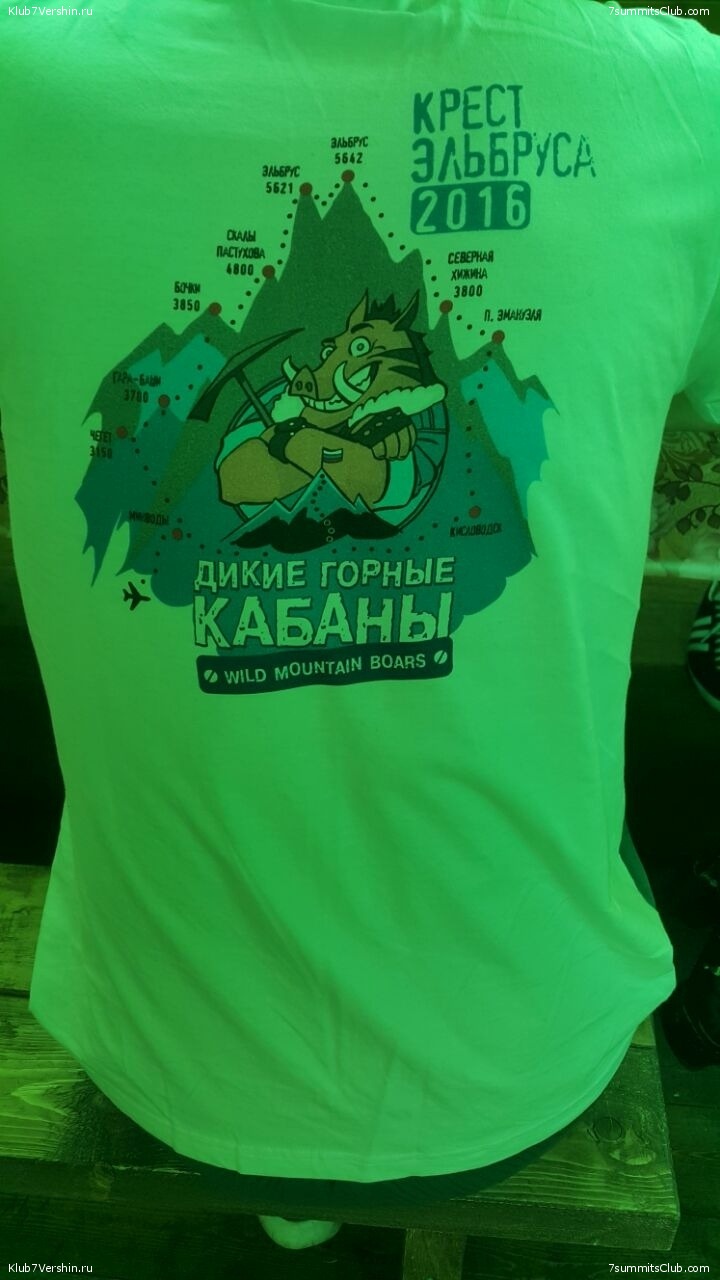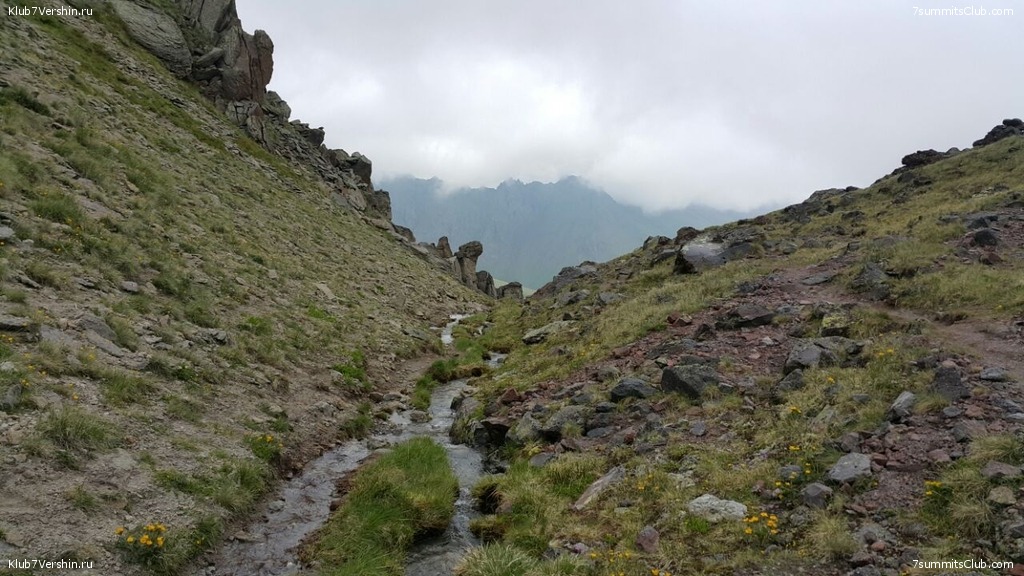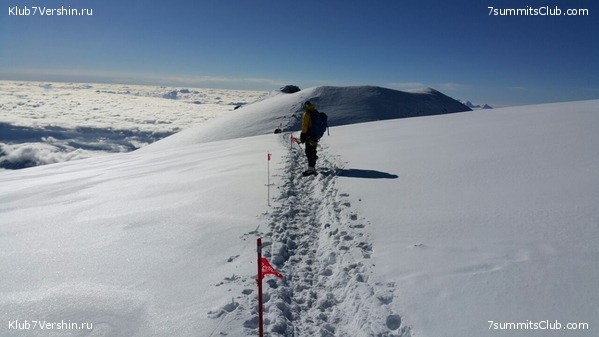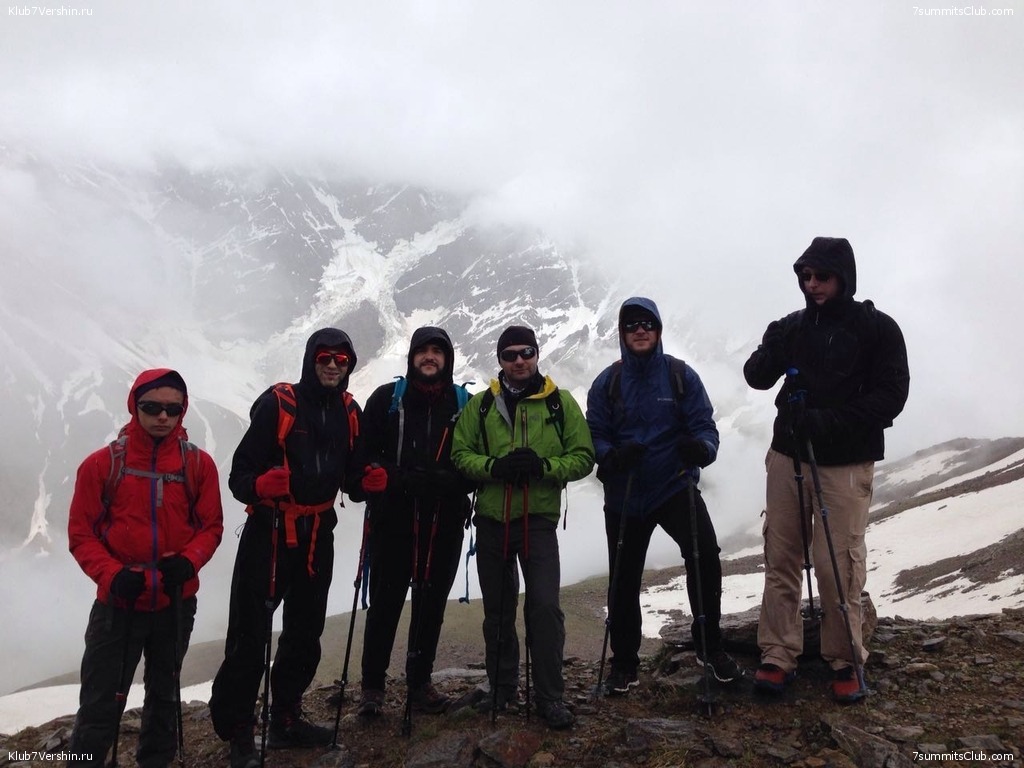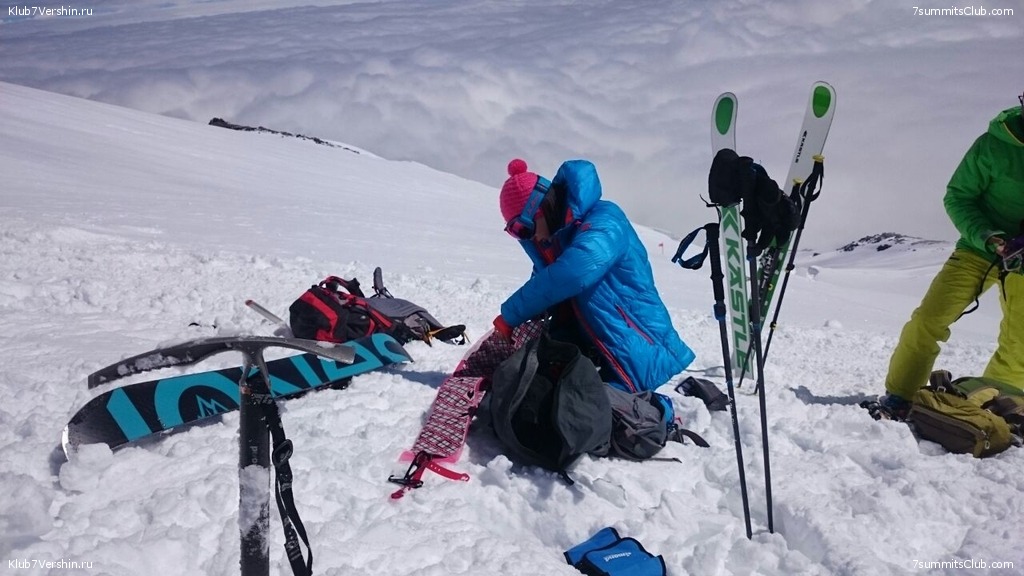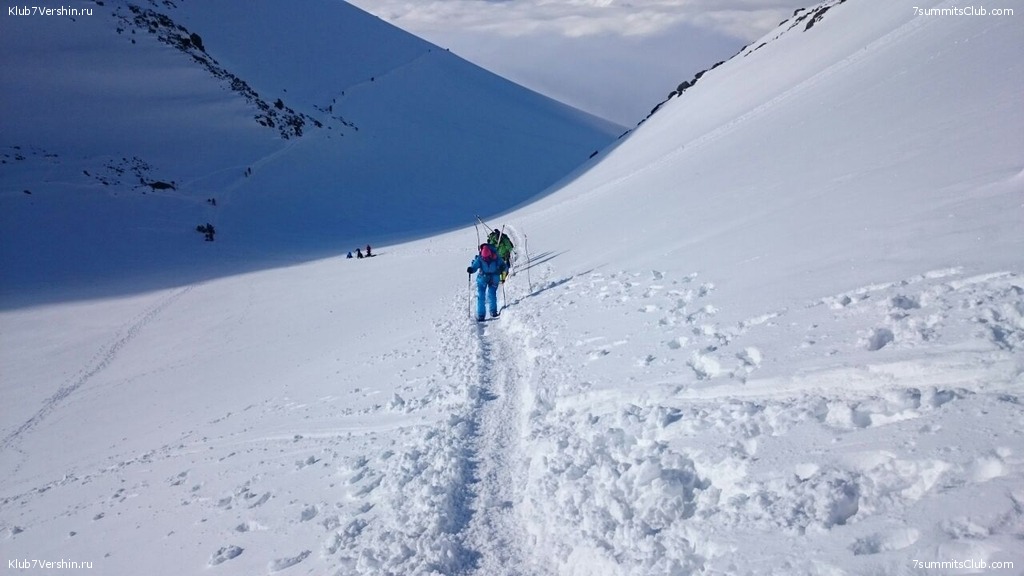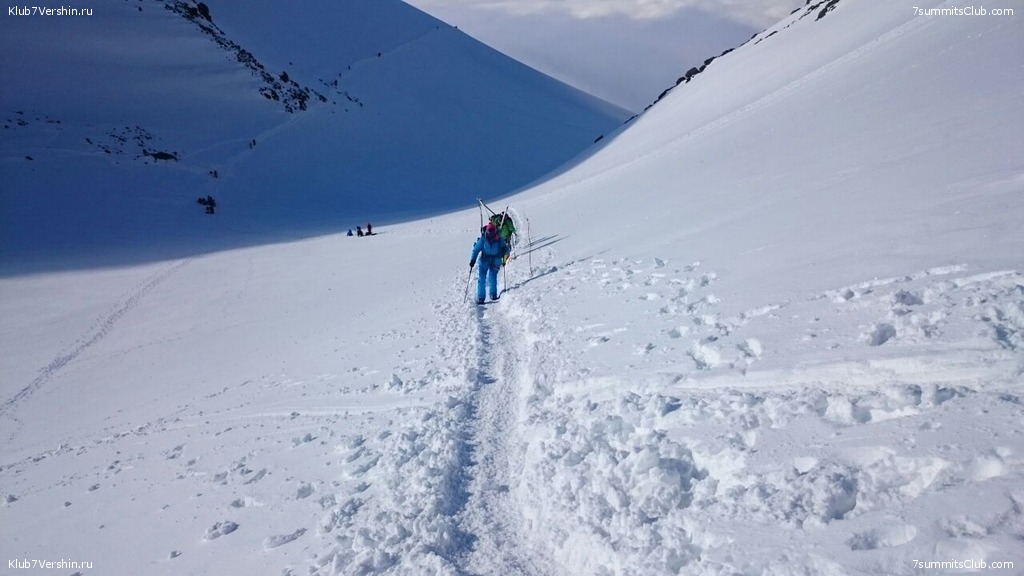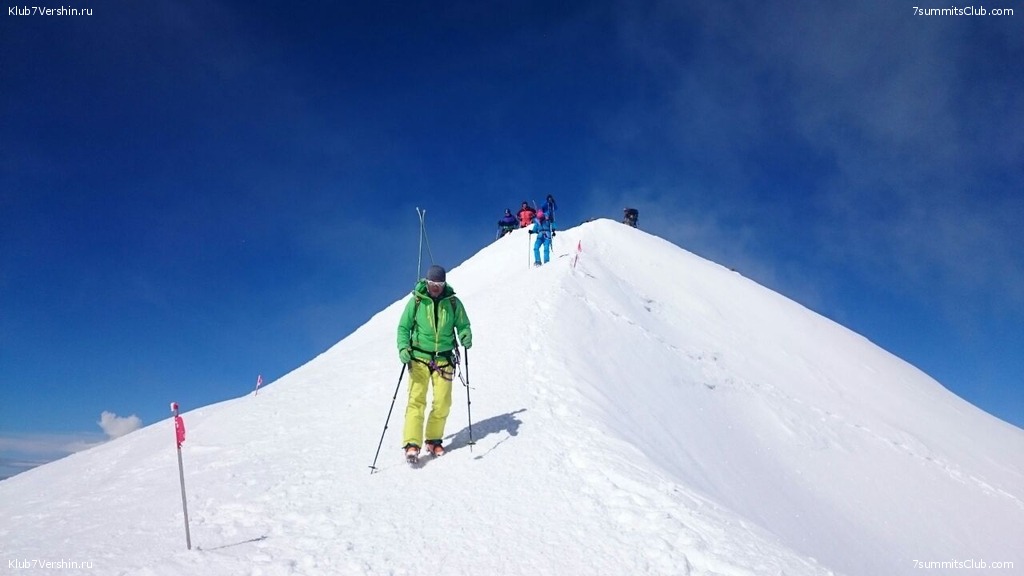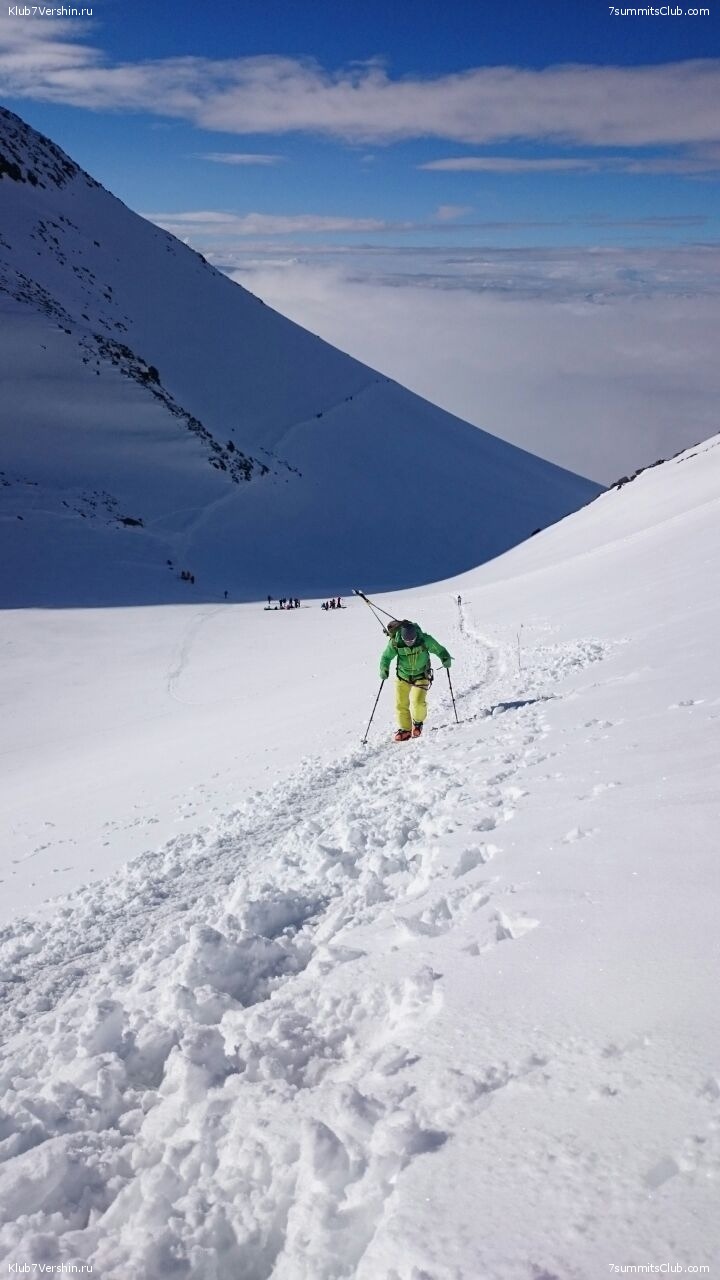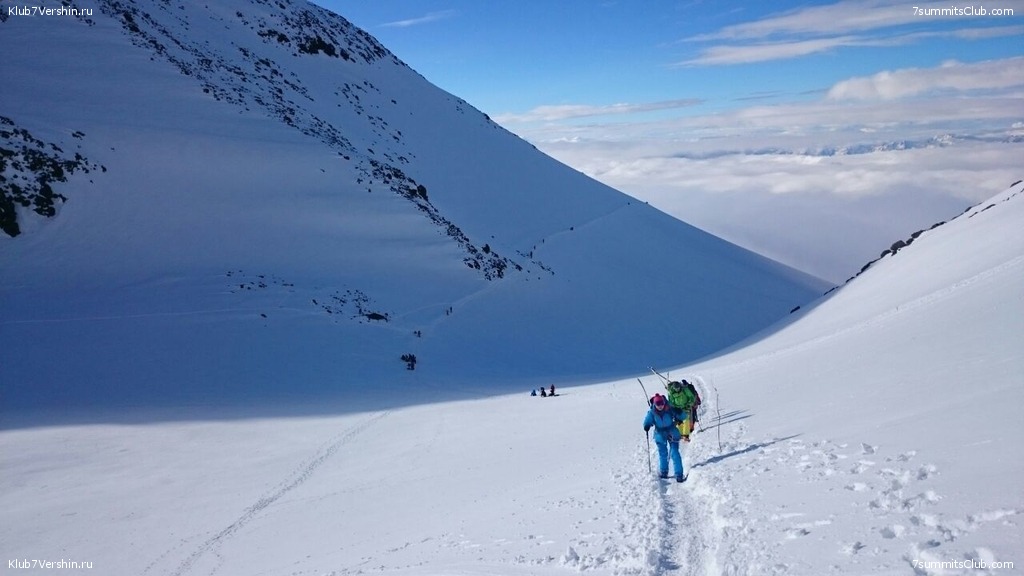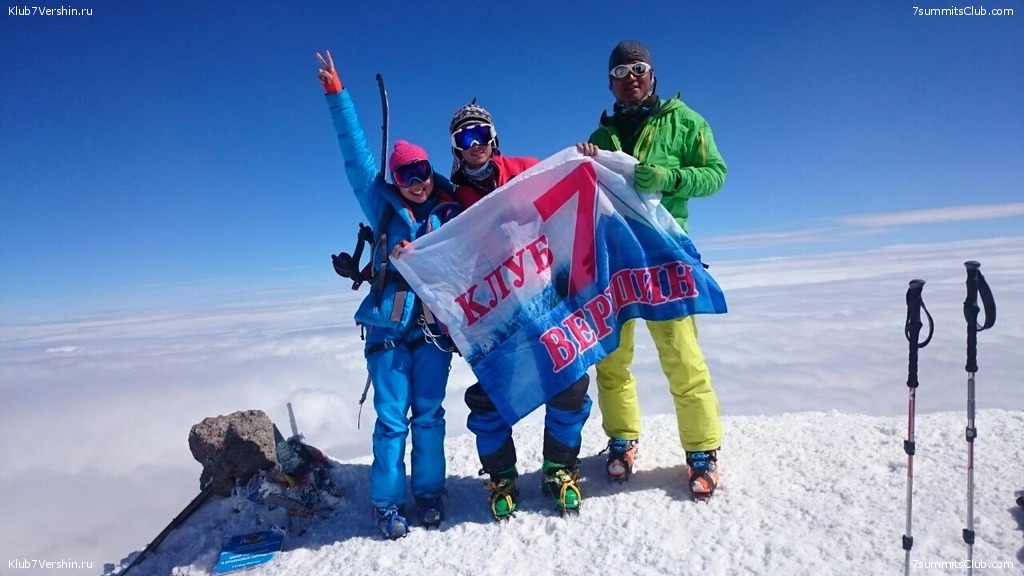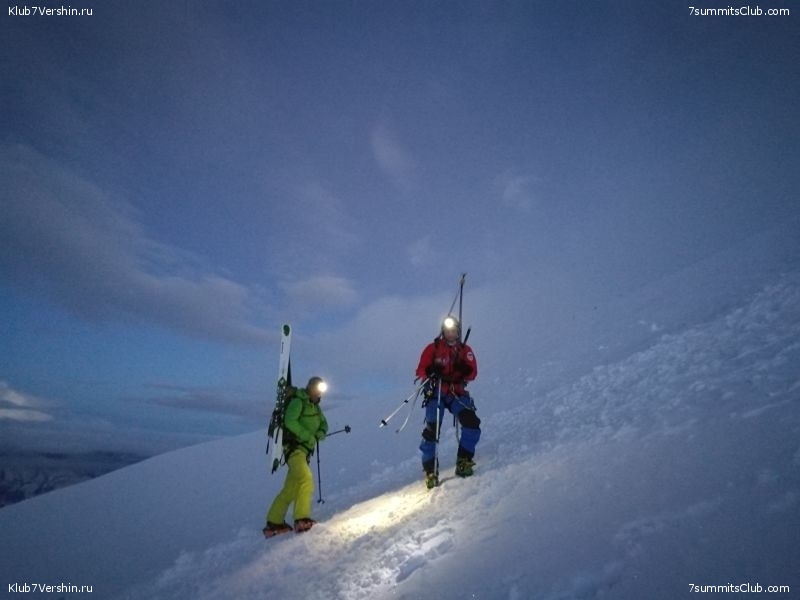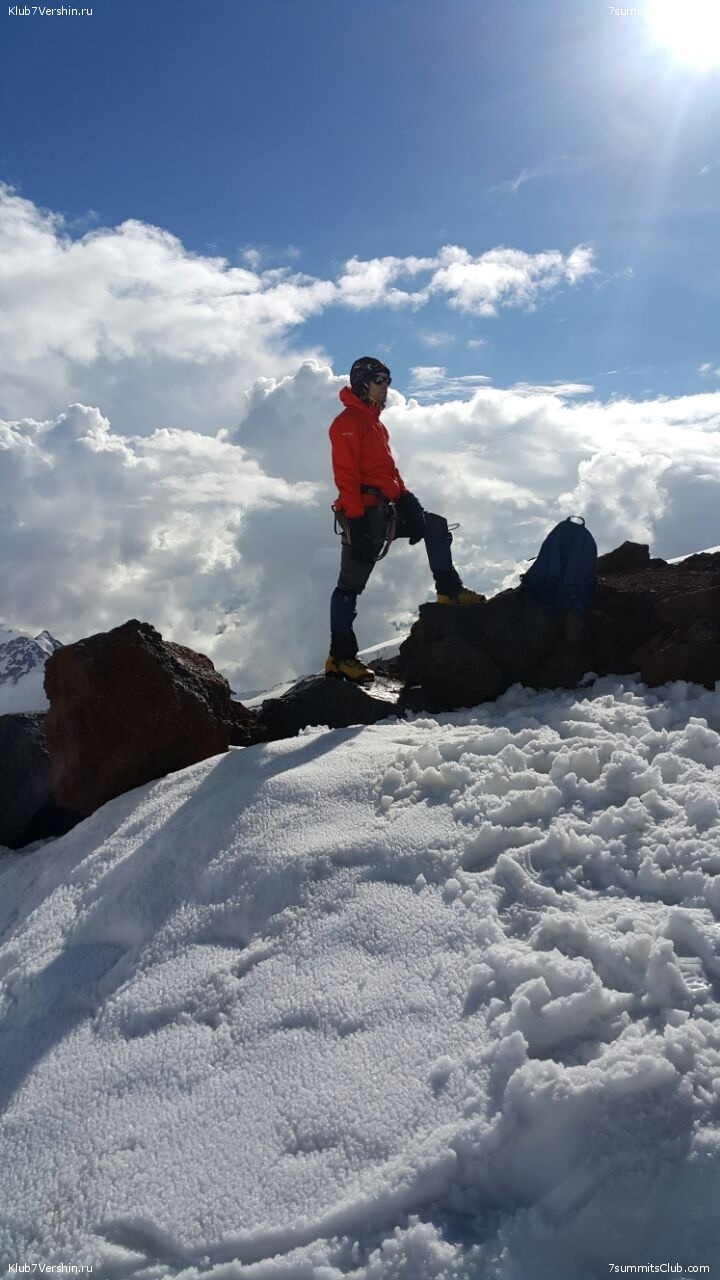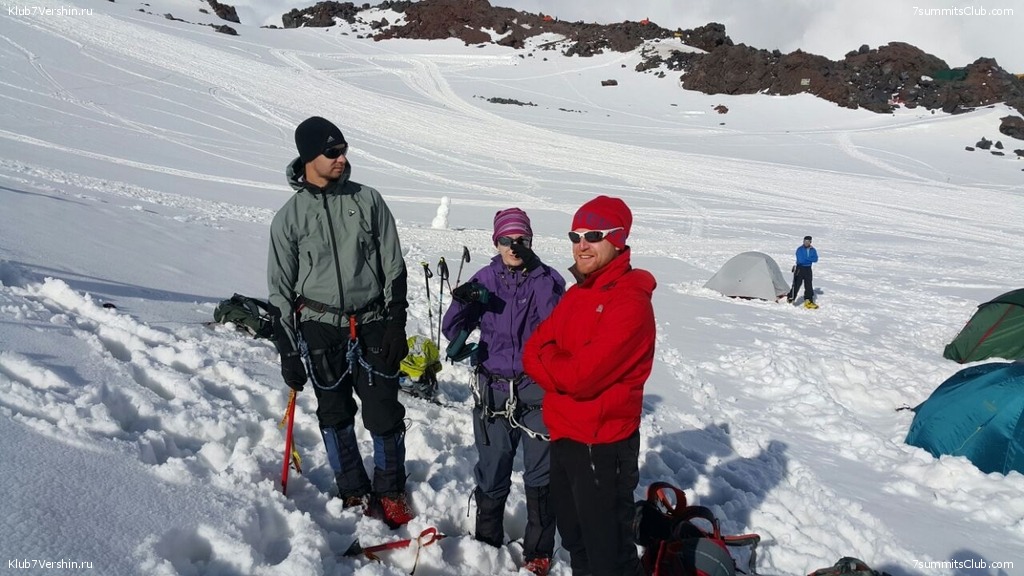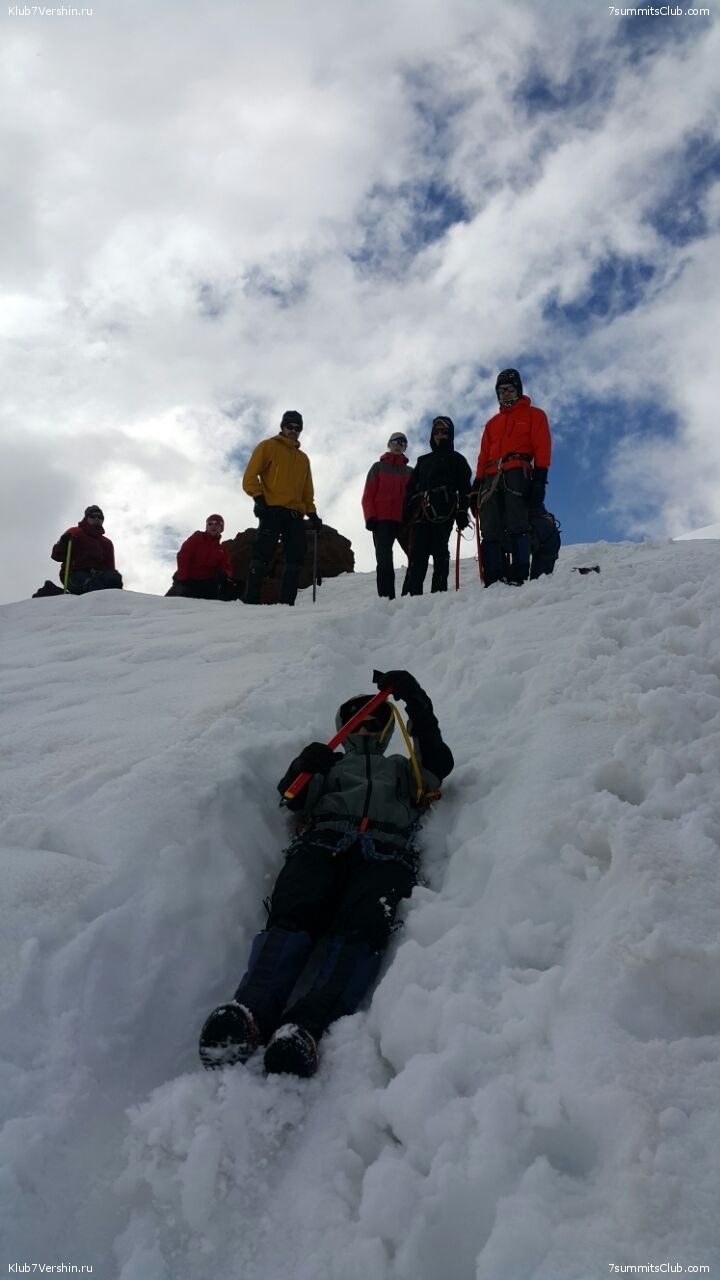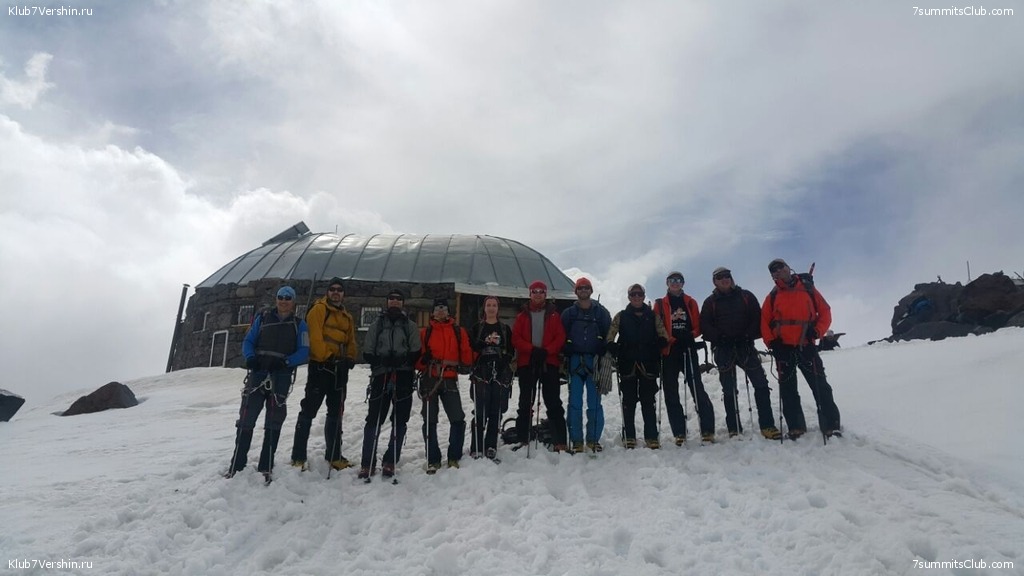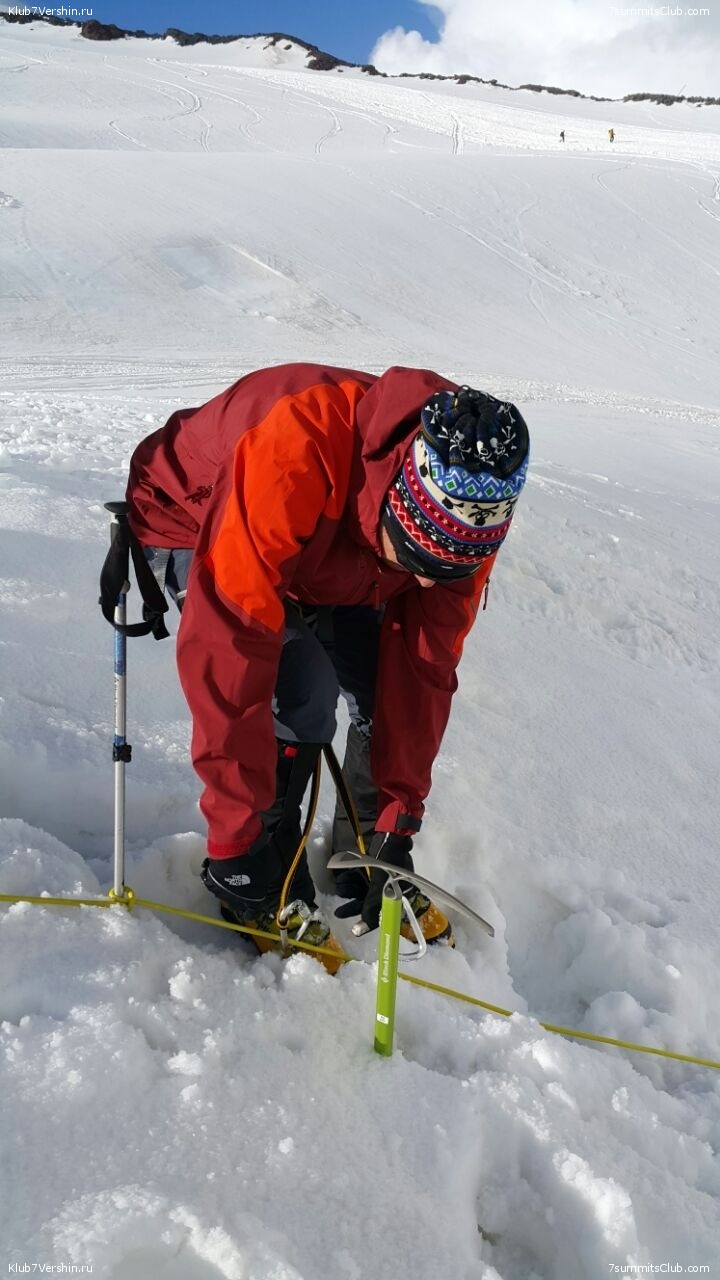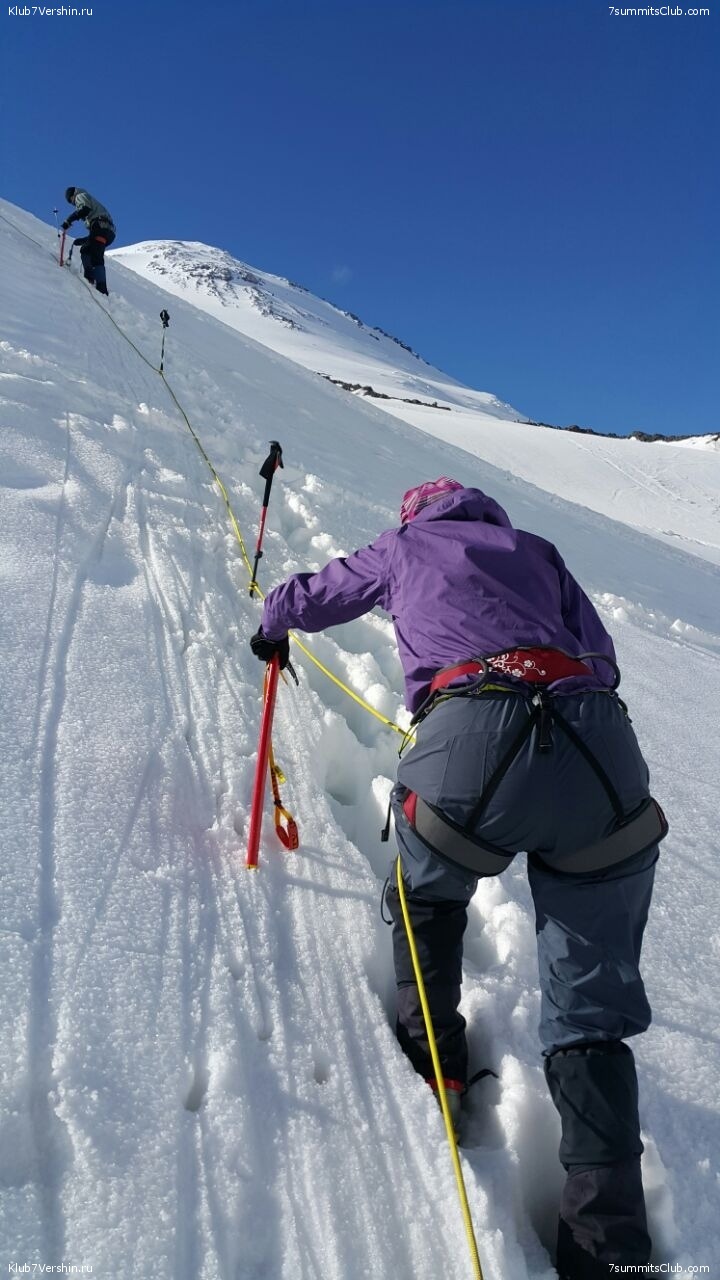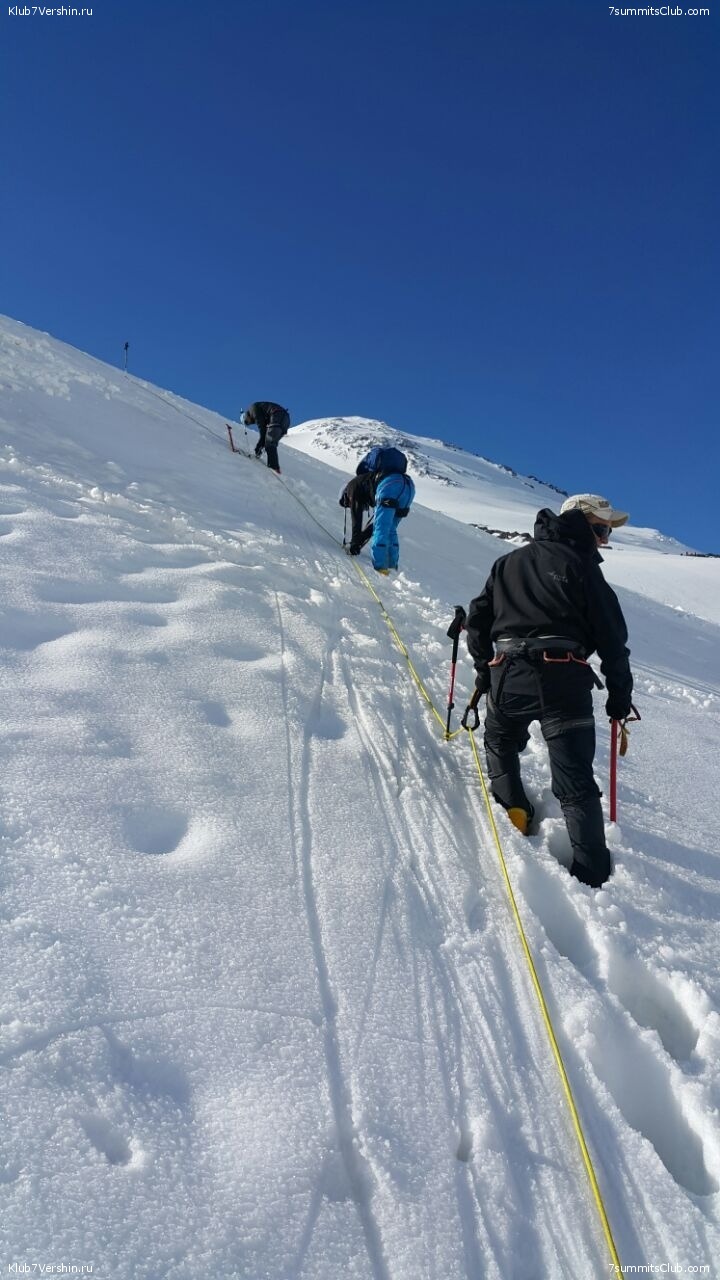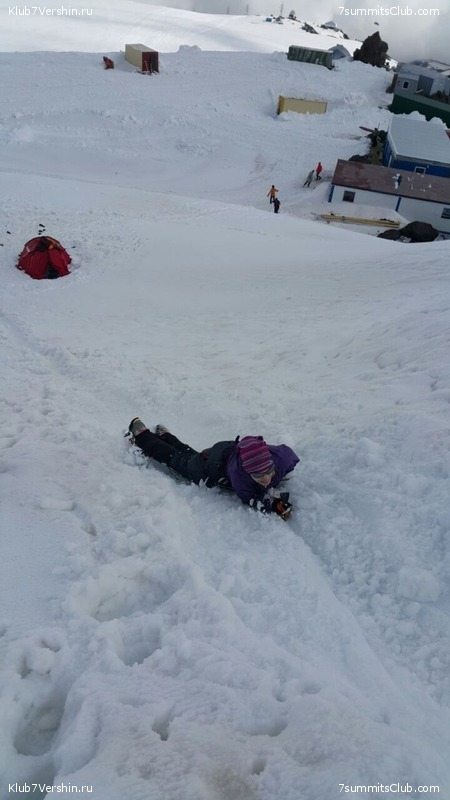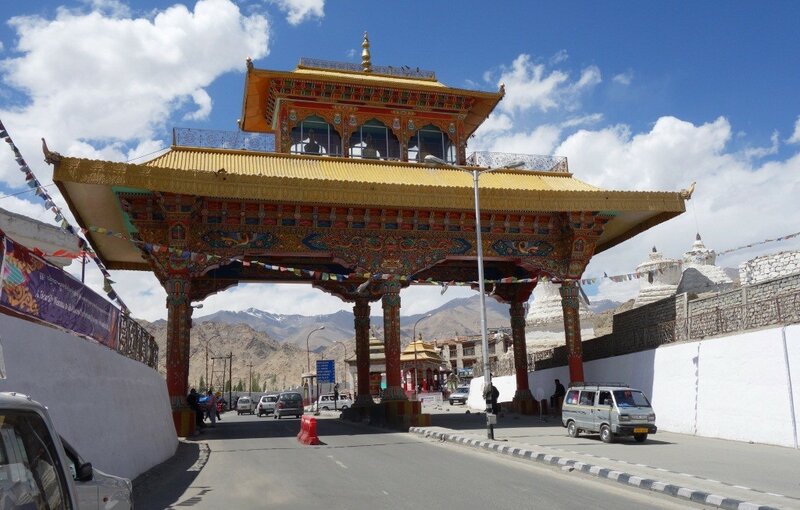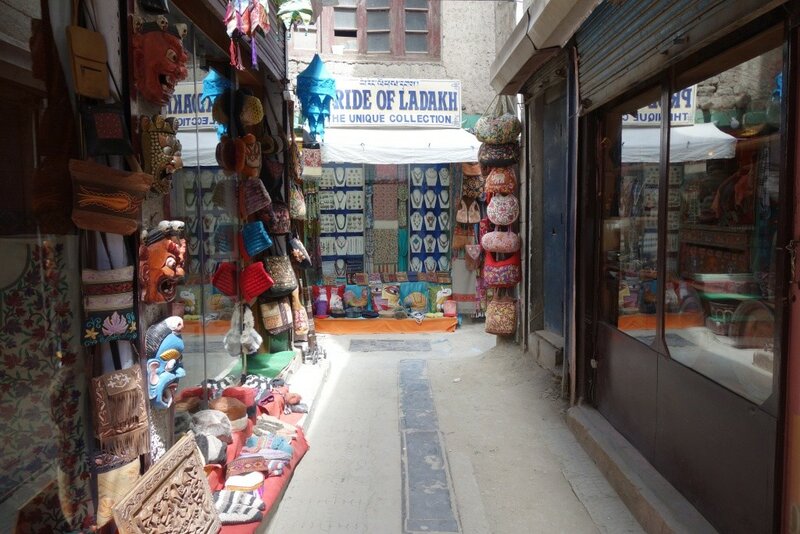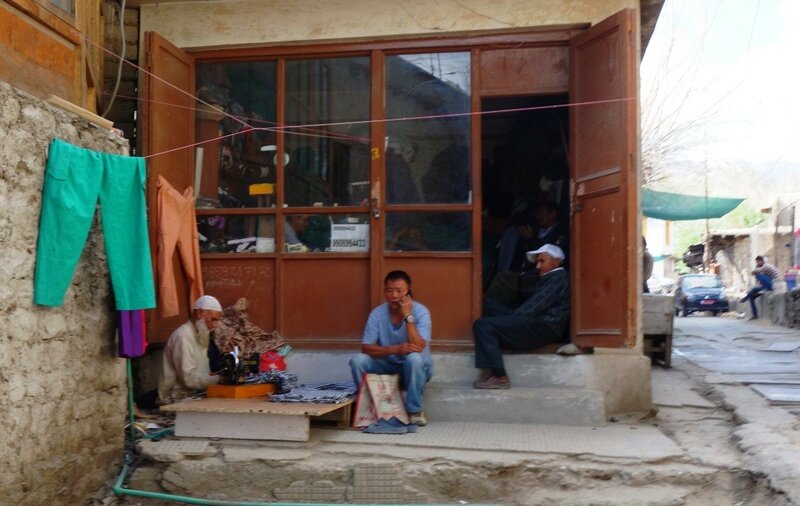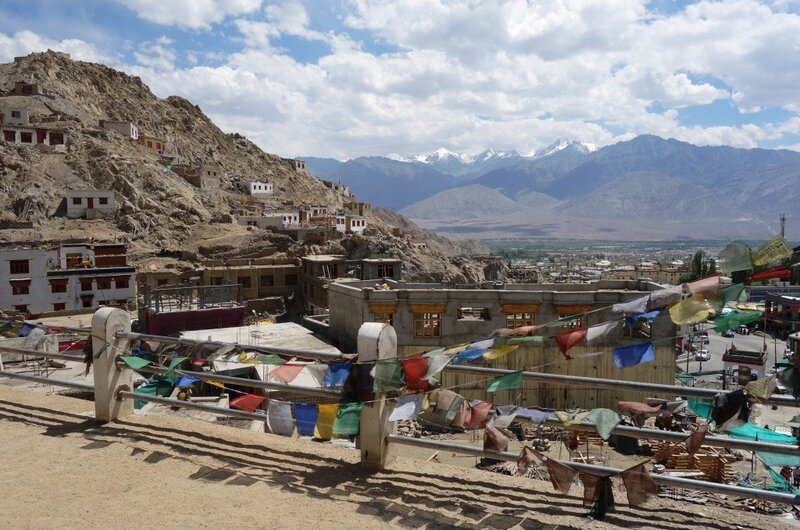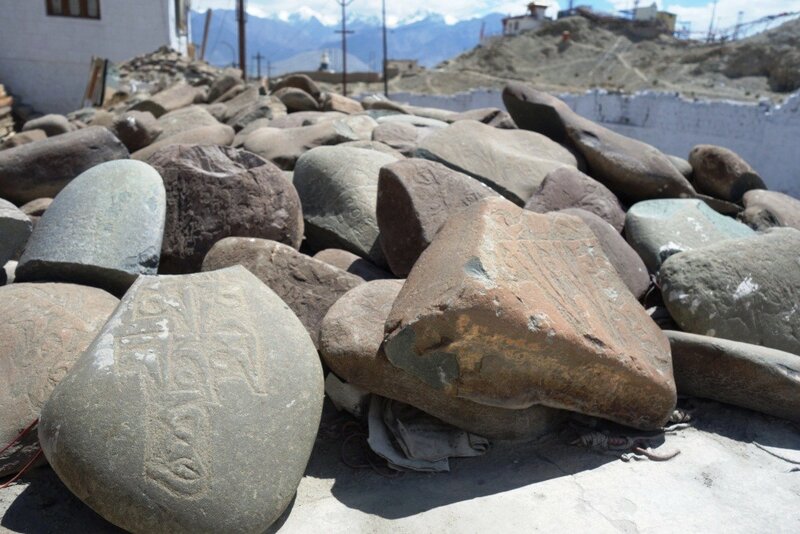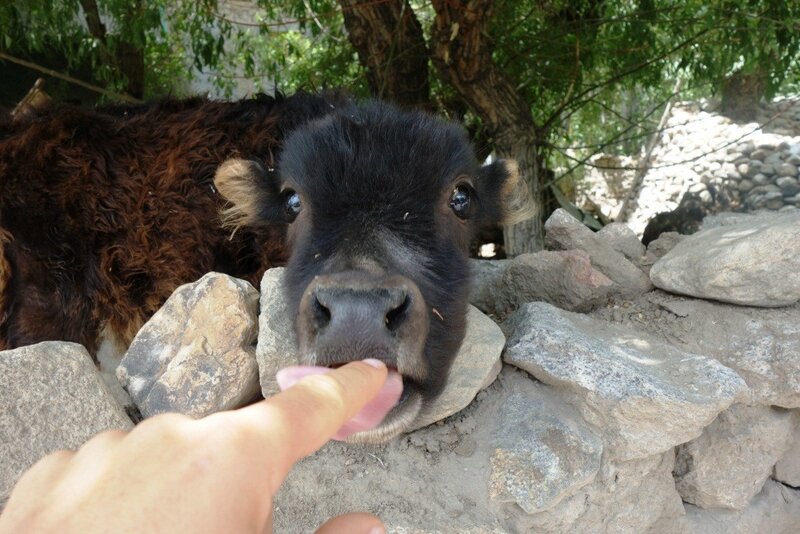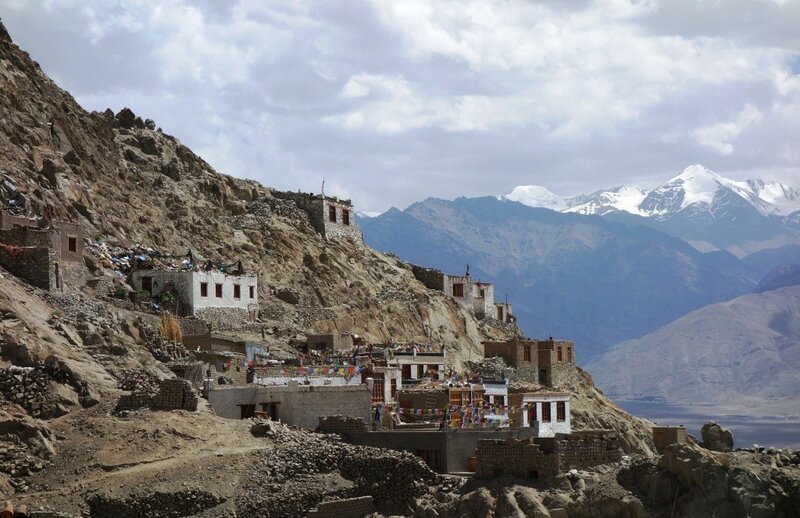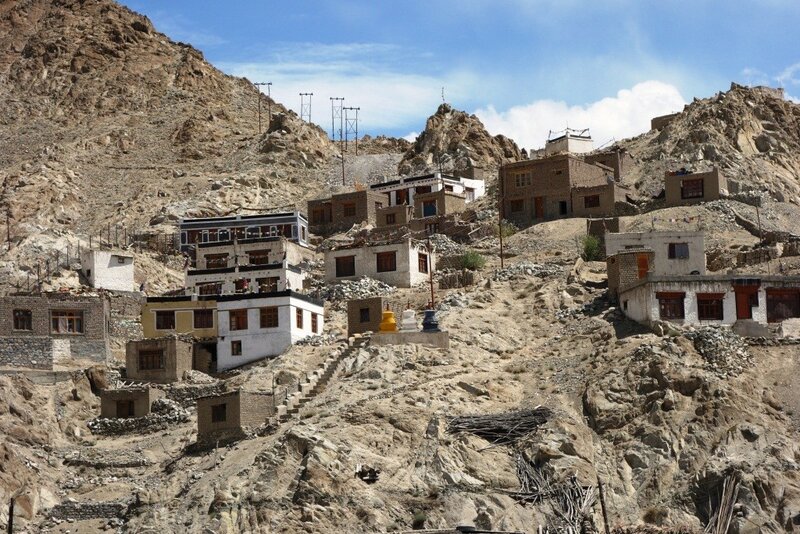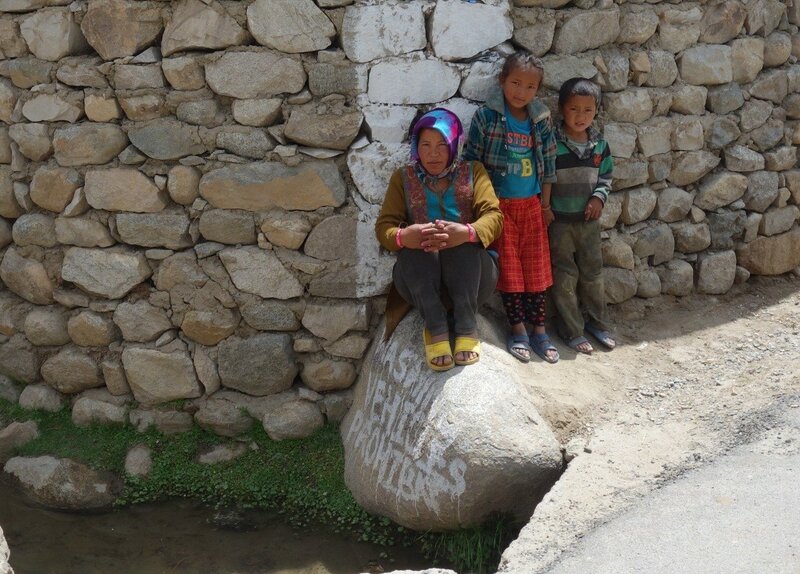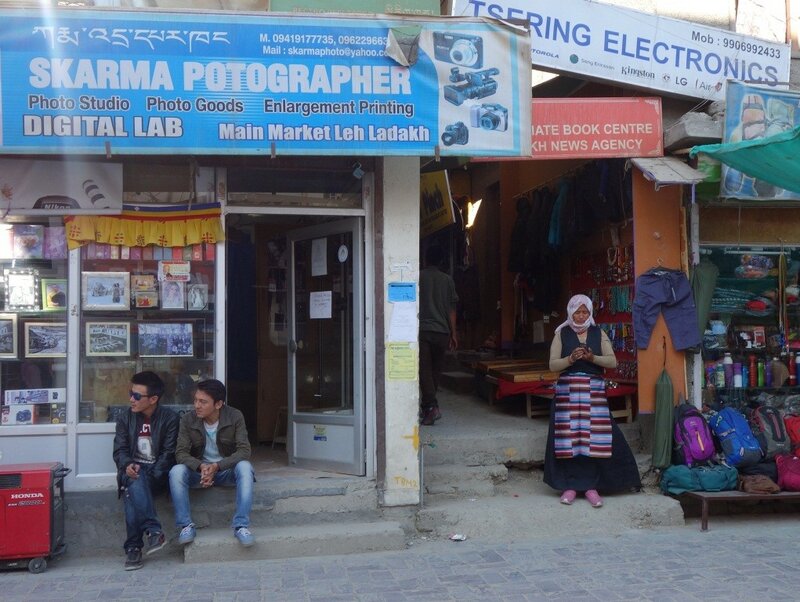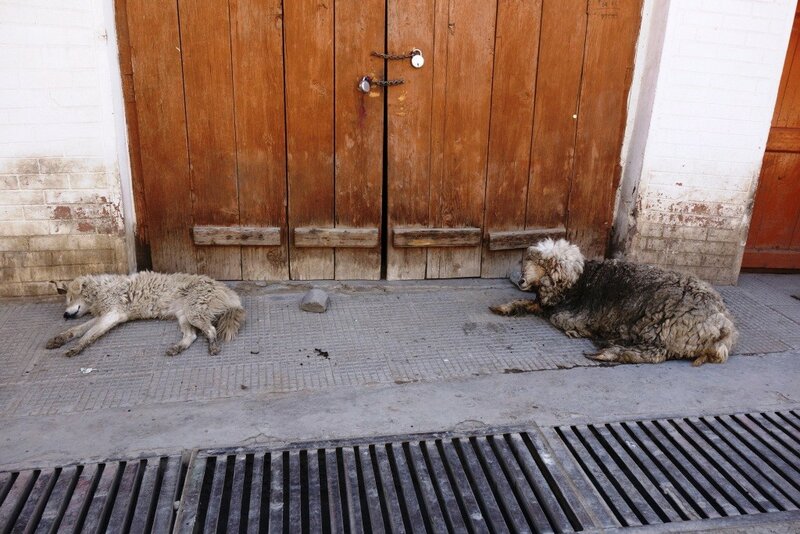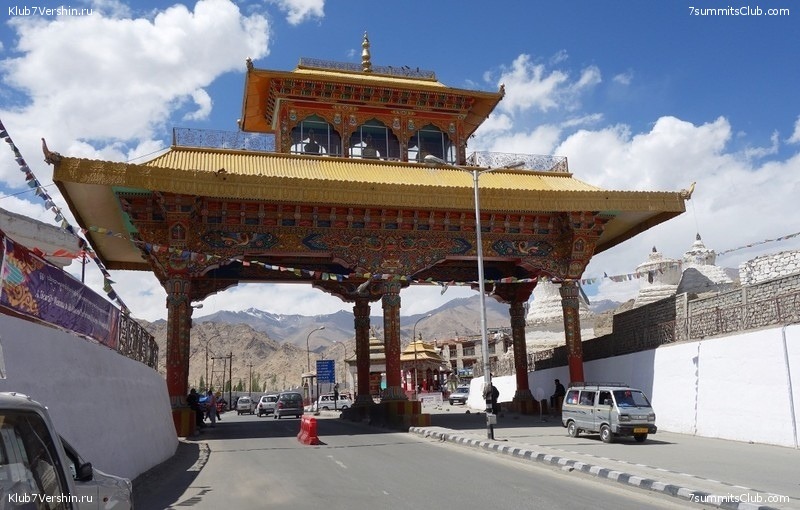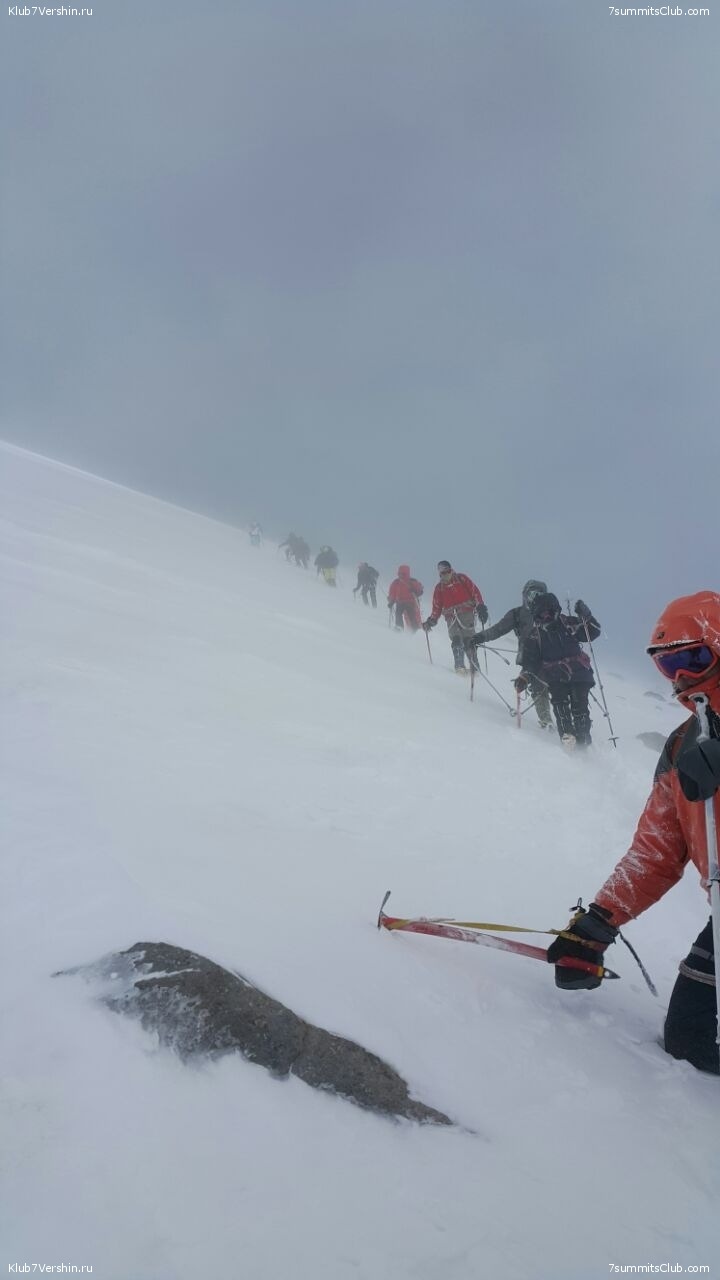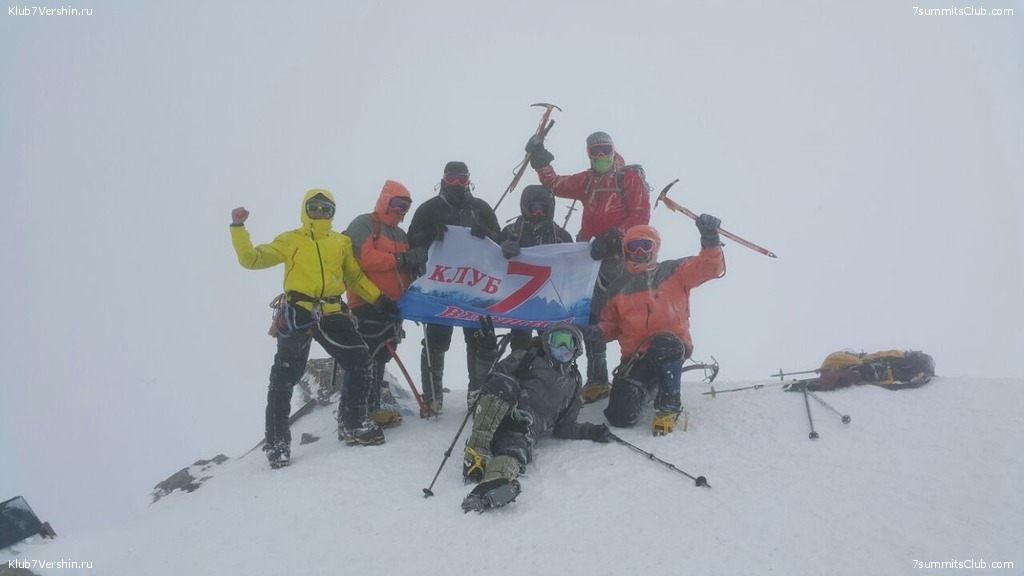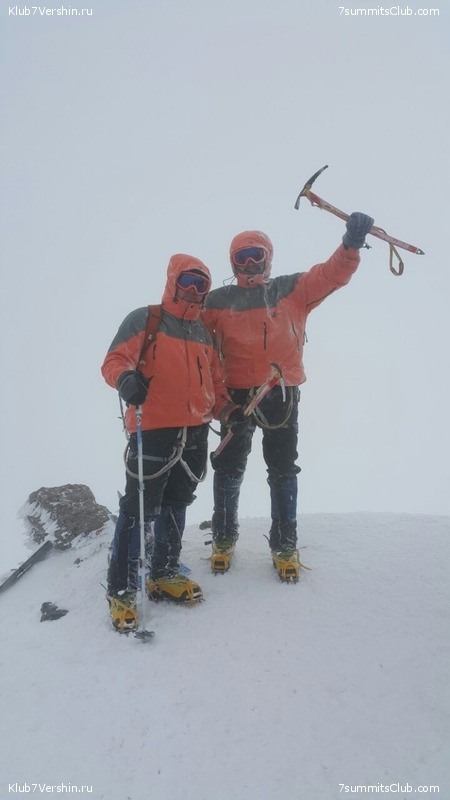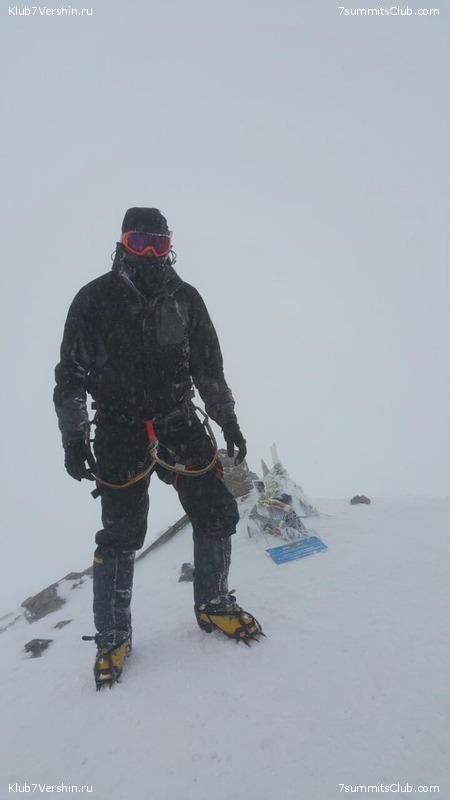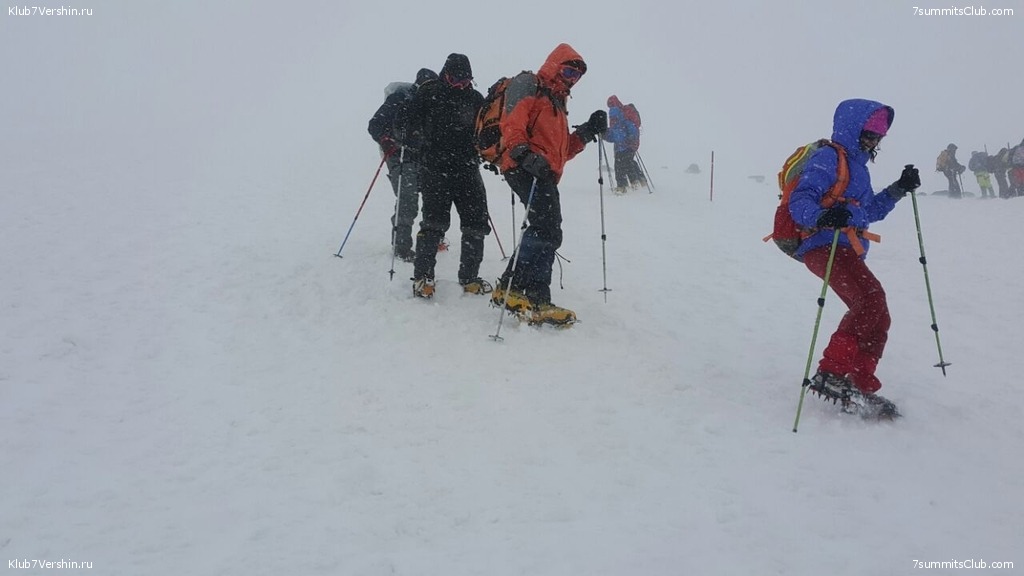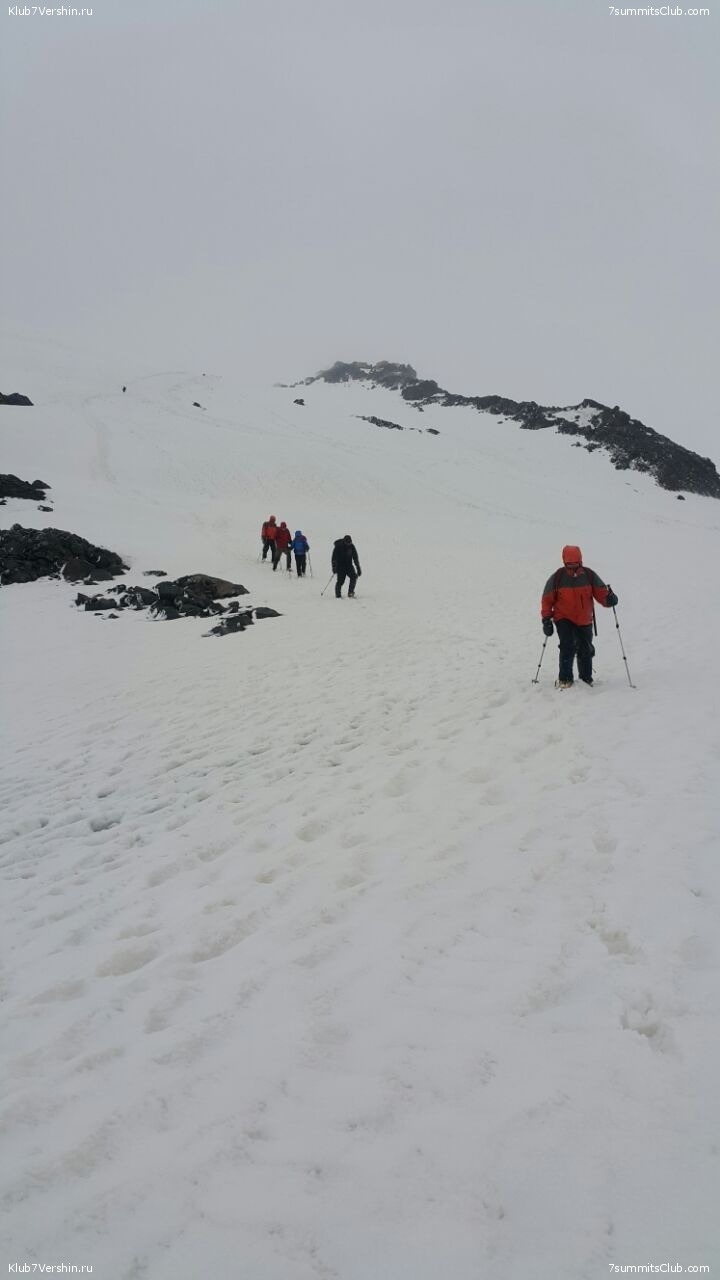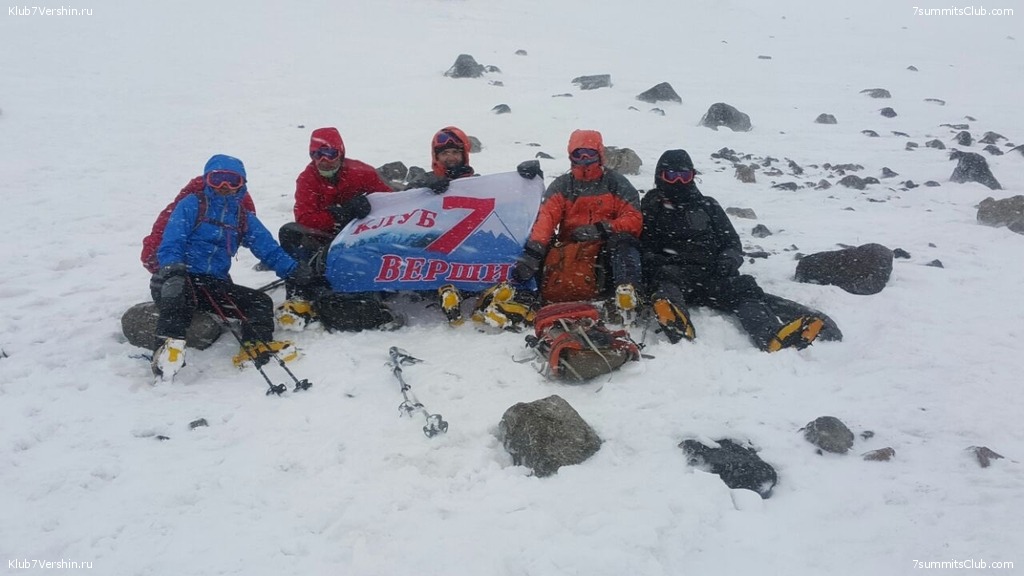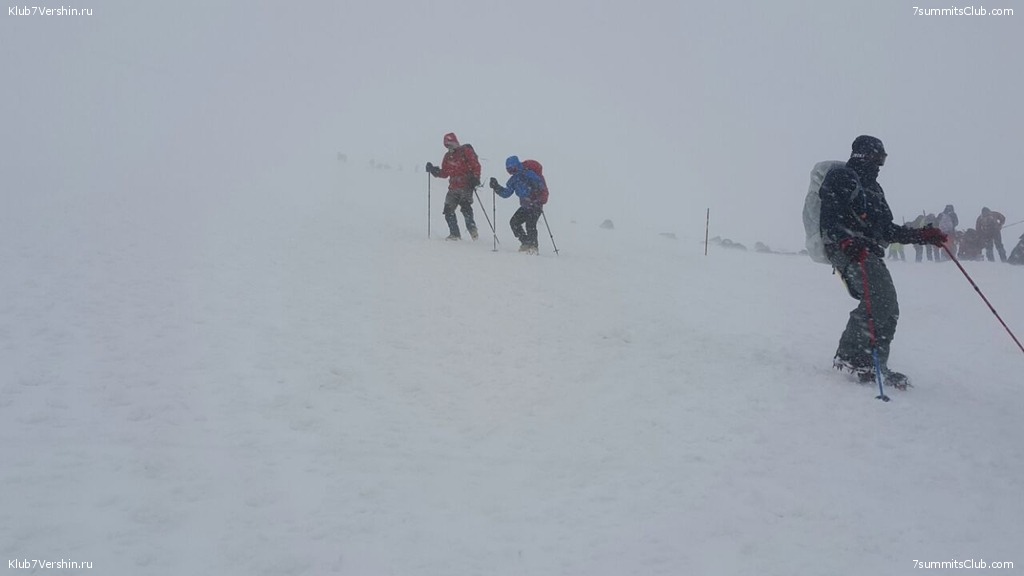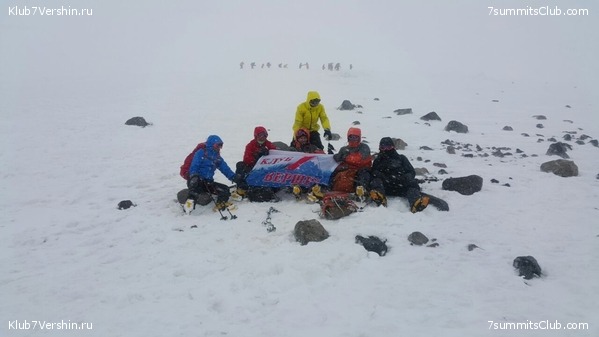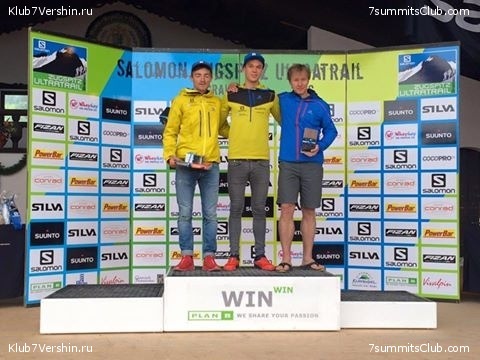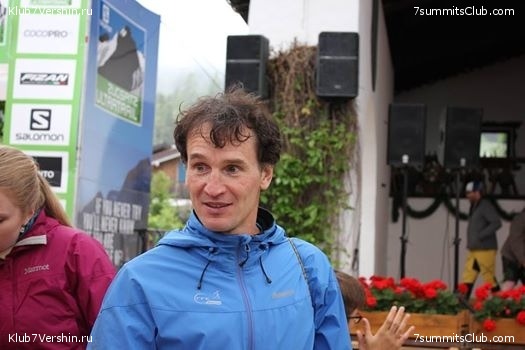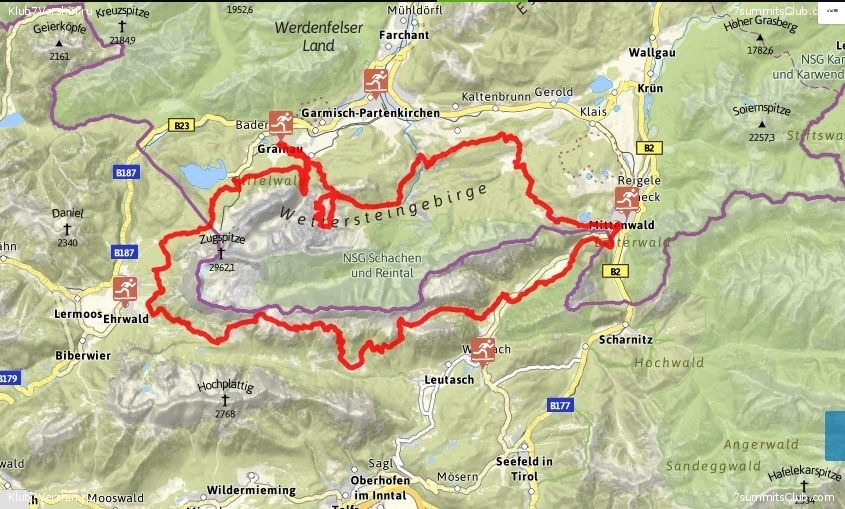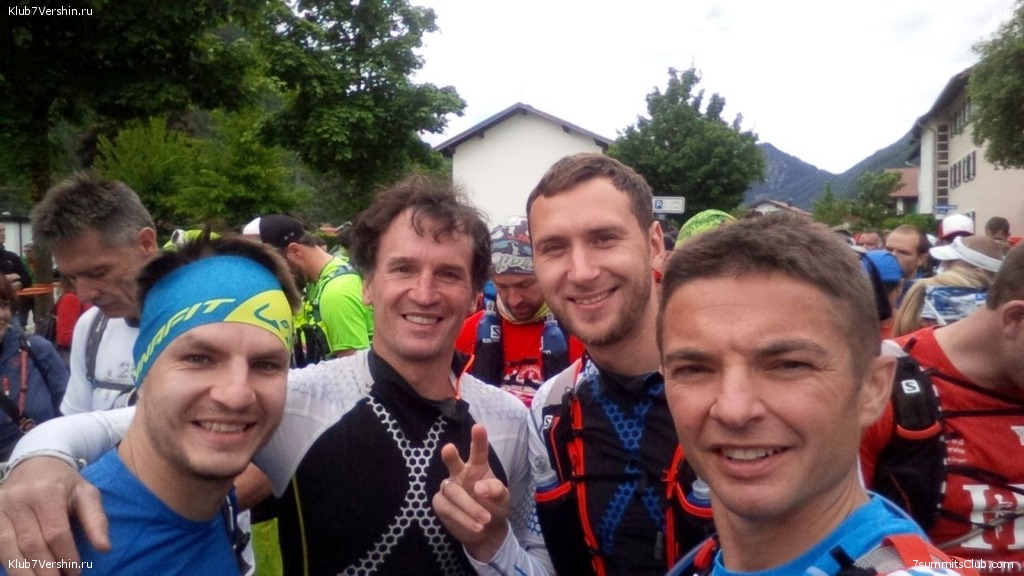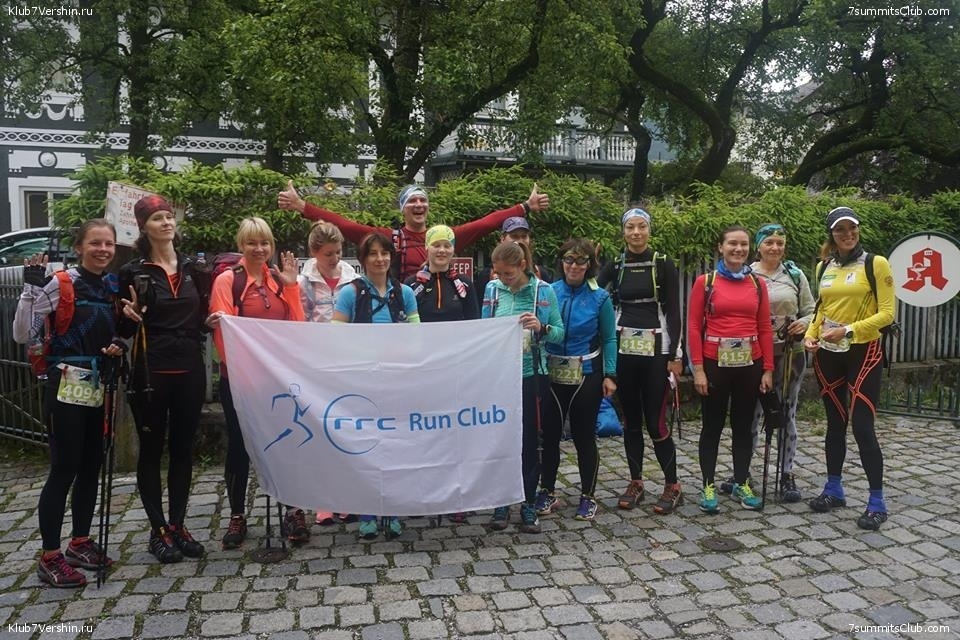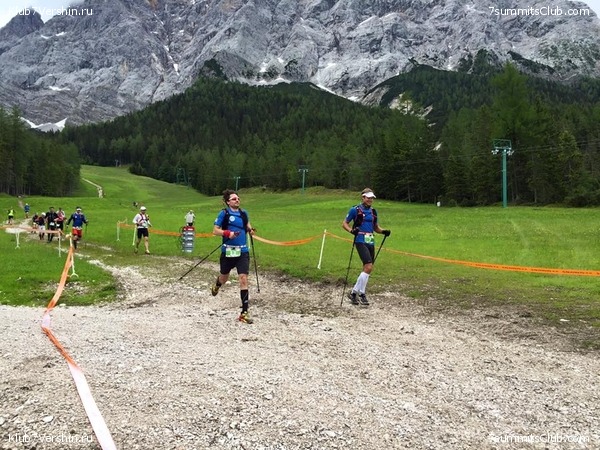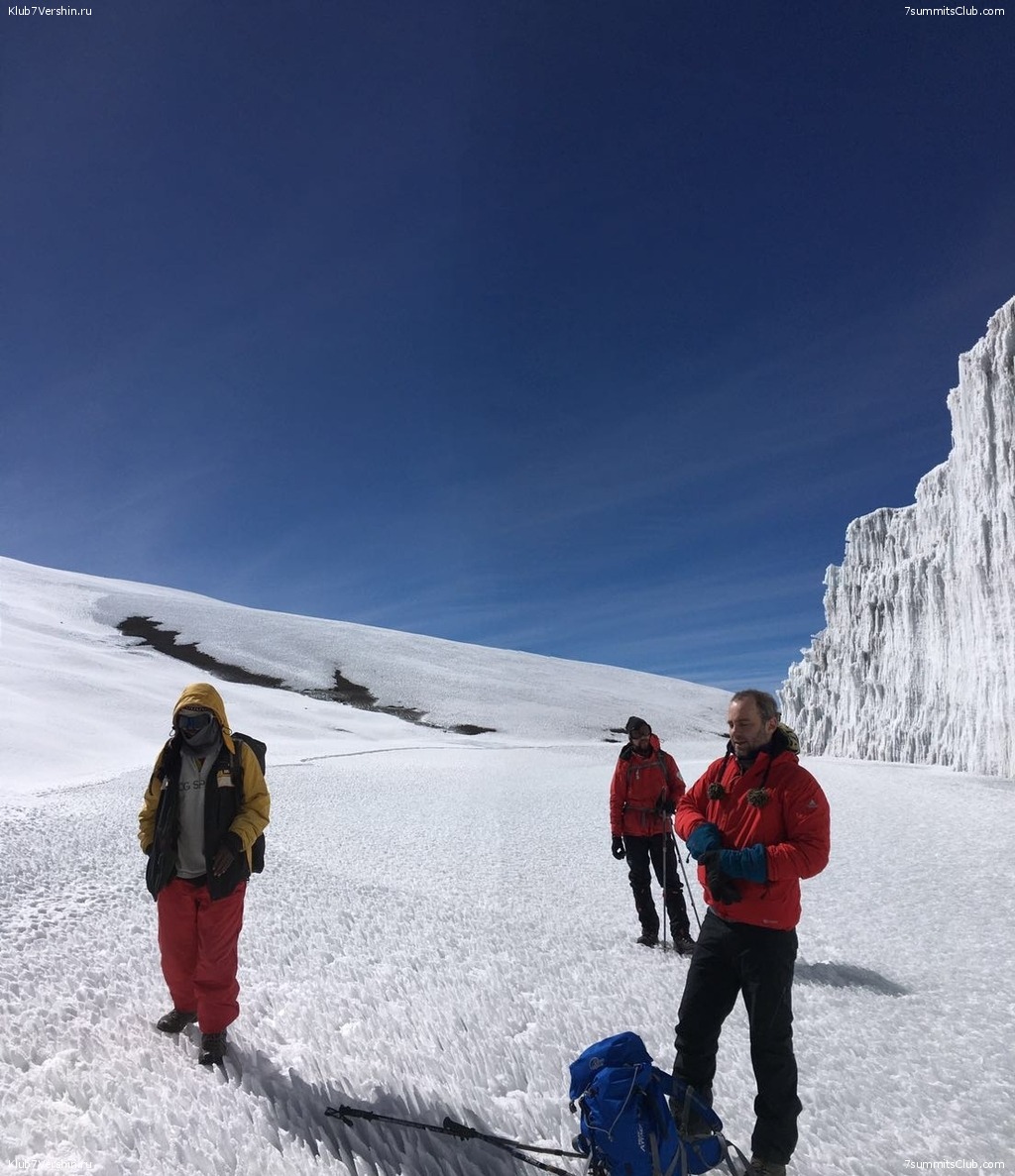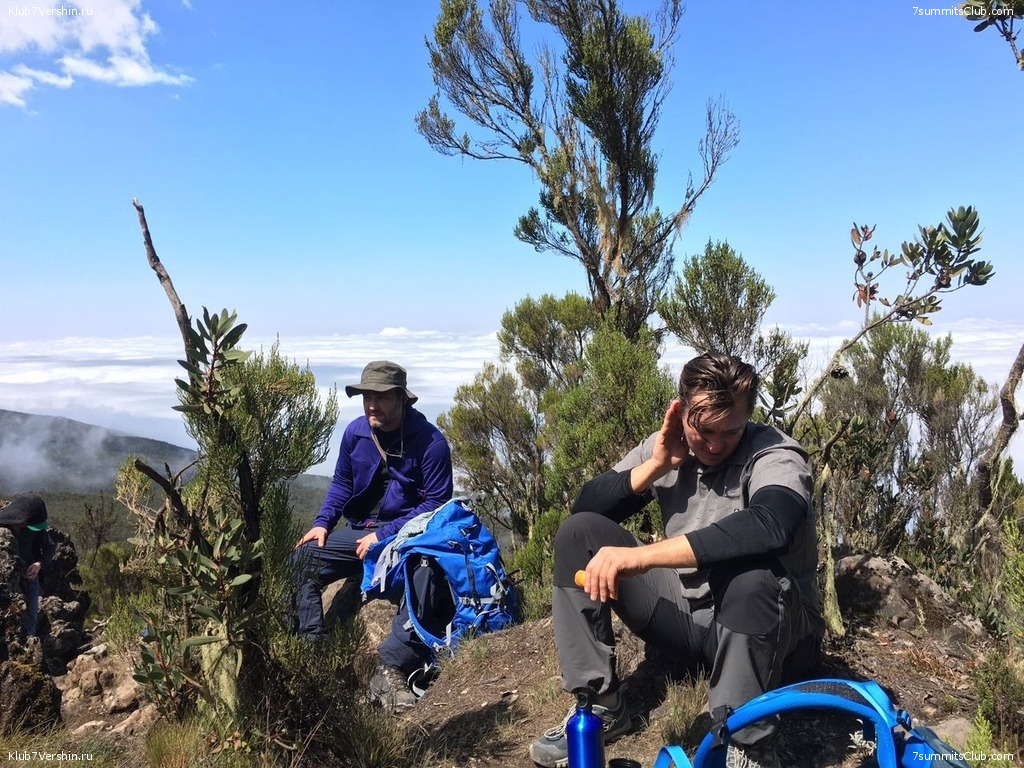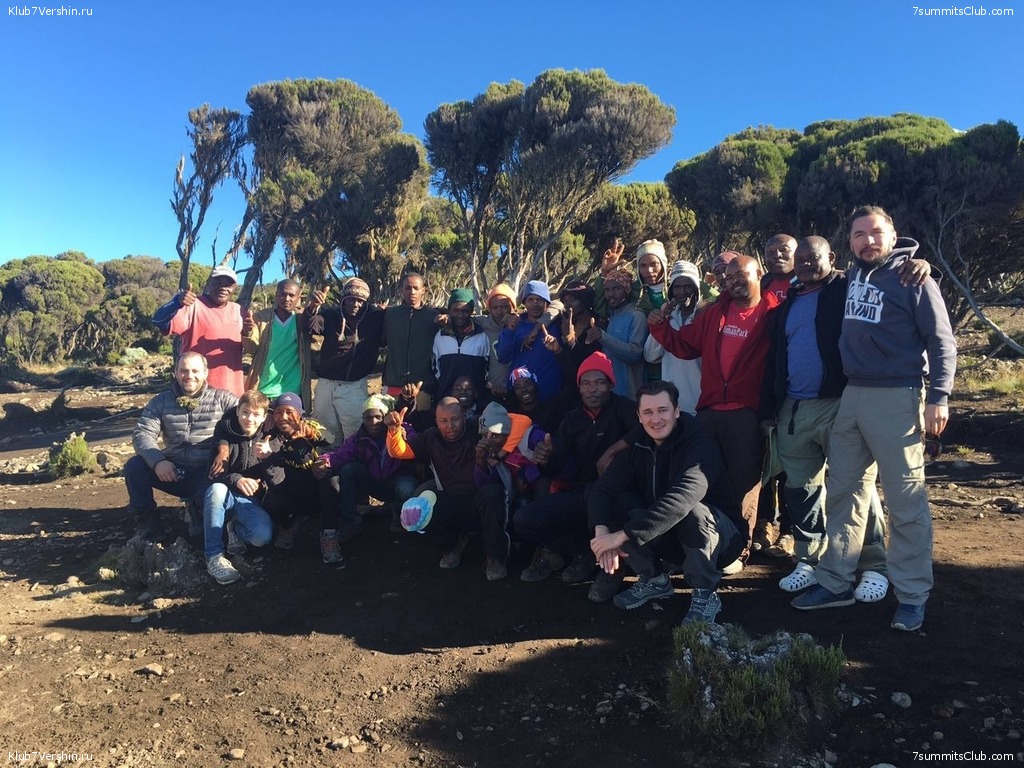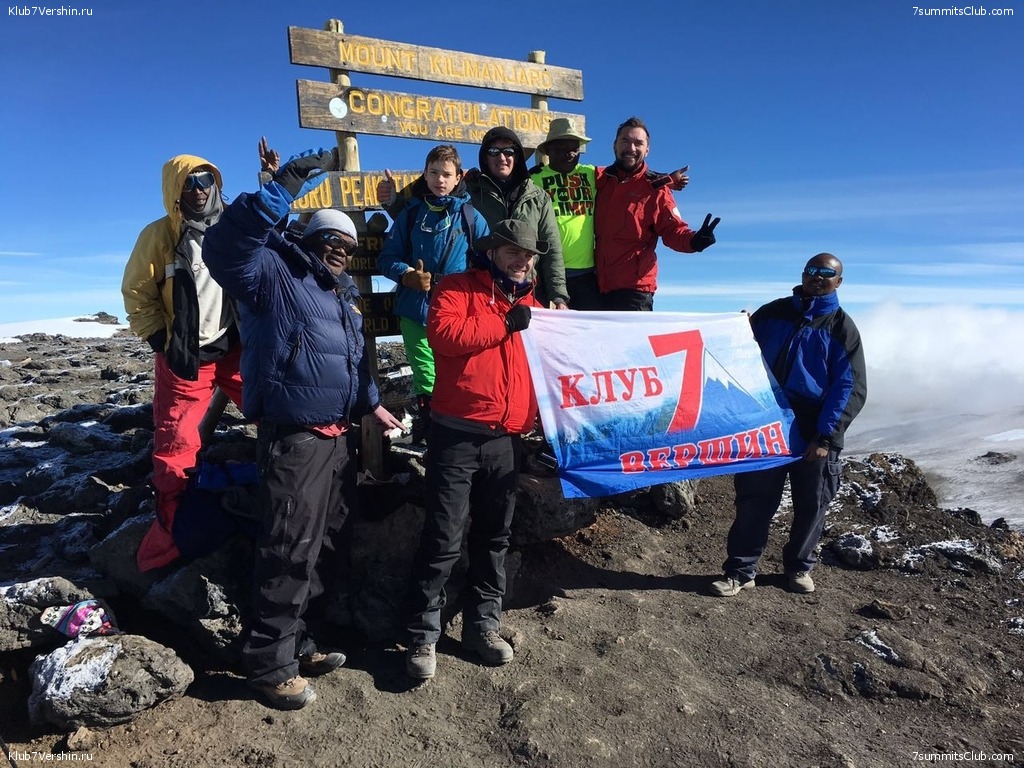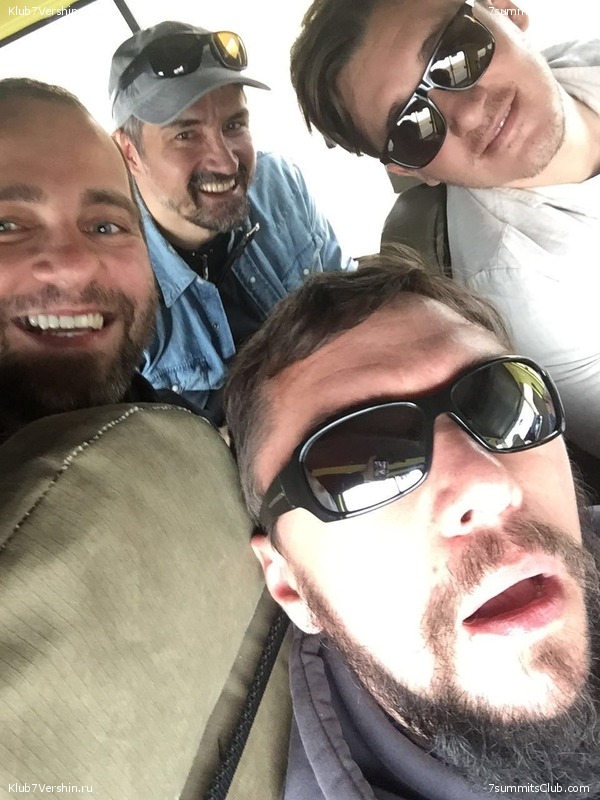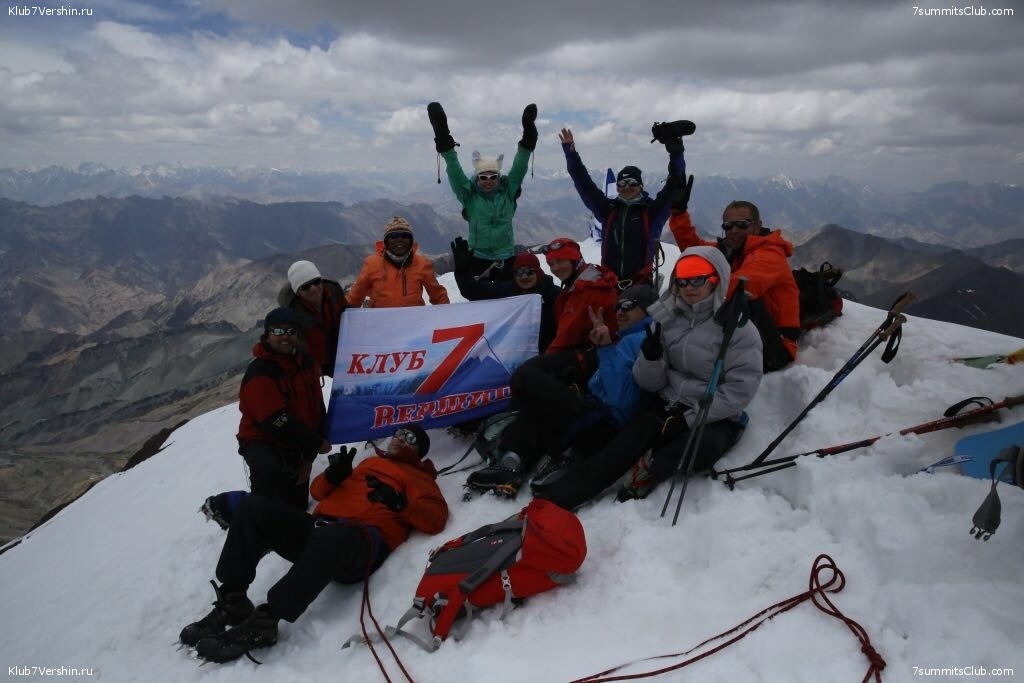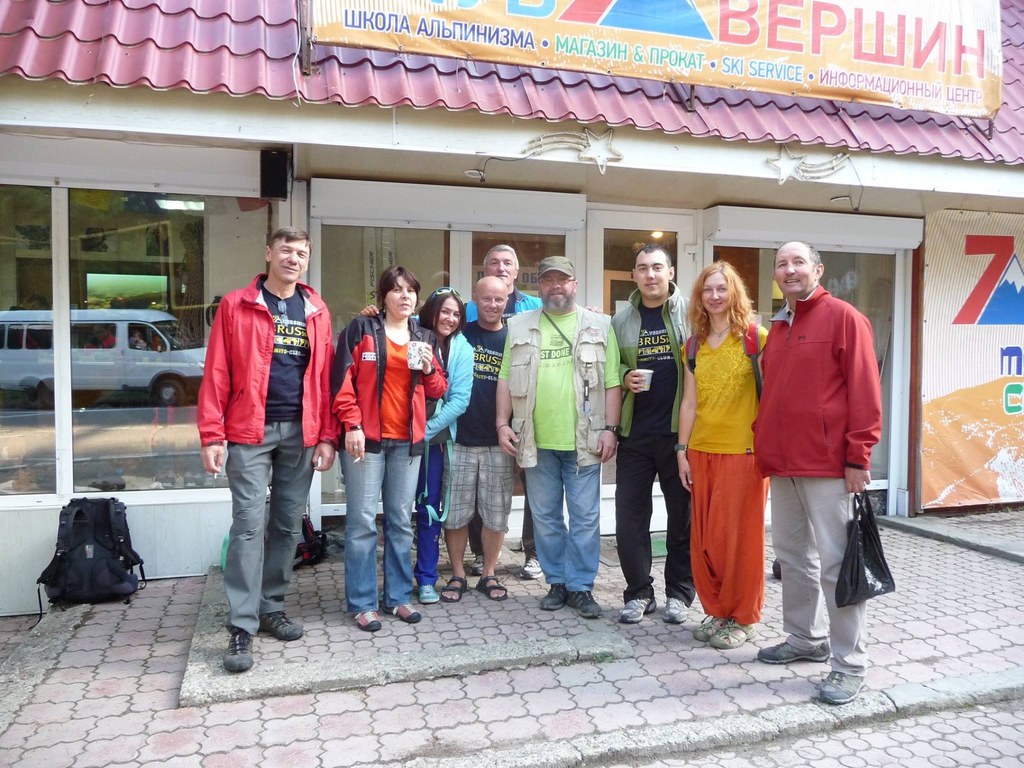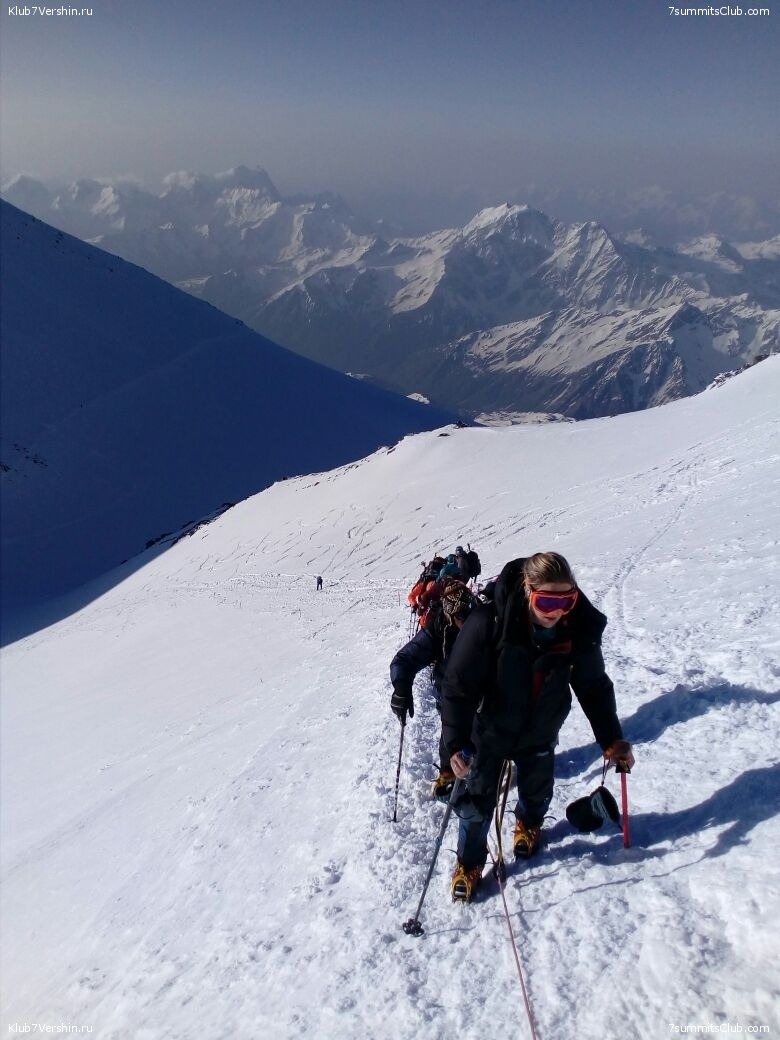All news - Page 242
Olga Rumiantseva. Photo from the ascent on Stock Kangri
Базовый лагерь Сток Кангри находится на уютной полянке в окружении белоснежных пиков. На второй день они обрели способность стоять. И даже весьма прямо.Вы же конечно помните, что все свободные и не очень камни по дороге на Сток Кангри ...
Базовый лагерь Сток Кангри находится на уютной полянке в окружении белоснежных пиков.
На второй день они обрели способность стоять. И даже весьма прямо.
Вы же конечно помните, что все свободные и не очень камни по дороге на Сток Кангри украшены надписями и рисунками.
Иногда это выглядит не очень удачно. Как например, призыв сохранять горы в чистоте.
Сразу хочется сказать "Так нафига ж вы своей краской на скале намалевали?!"
Но местами это выглядит весьма мило. Вот на тропе на случайном валуне почти философская мысль.
На обед нас ждал борщ. Вы спросите, откуда в Индии борщ? Известное дело откуда. Запасливые участники привезли. Так что мне осталось только объяснить повару, что с этим делать.
Наш непальский гид Вончюк опасливо попробовал красную жидкость и кажется не оценил. Ну а у нас борщ пошел на ура.
Благодаря ему временно обрели аппетит даже те, кто казалось бы насовсем его утратил под действием горной болезни.
После обеда ожившие и повеселевшие все разбежались согласно своим интересам.
Я же забралась на холм повыше и созерцала, как моя группа расползается по разным склонам. Каждый выбрал себе свою цель и высоту.
Я же увлеклась лошадками и цветами и не заметила, как поднялась на 300 метров.
Потом в лагере все собрались и впечатлениями обменивались.
А наш фотограф со своей ретро техникой всё это запечатлевал.
Правда потом он опрометчиво дал этот фотоаппарат мне в руки. Это он конечно зря.
Под мелодичные крики осликов лагерь готовился ко сну.
А знаете как наш лагерь выглядит в темноте? Я тоже не знаю. Но если подсветить фонариком, выглядит это вот так - как будто десятки светлячков прилетели на поляну.
С утра пораньше - снова в путь. За красивыми видами. Акклиматизация называется.
На этот раз на прогулку с нами кроме нашего постоянного сопровождающего непальца Ванчука пошли наконец примкнувшие к нам три гида-альпиниста.
В Индии я первый раз столкнулась с такой системой. Обычно в Непале или на Килиманджаро, например, с самого начала весь путь до горы с группой идет один гид. Он и на треккинге, он и на вершину ведет. При необходимости берутся еще дополнительные ассистенты гида на сам день восхождения.
На Стоке с нами всю дорогу шёл наш чудесный Ванчук, который заботился о нас как родная мама. Его роль можно было назвать главный по тылу. А на само восхождние он не шёл. На восхождение нужно было заказывать отдельных гидов. Или идти самостоятельно.
В этот день наше знакомство с животным миром Ладакха пополнилось общением с козлами.
Очередная неспешная прогулка, чтобы не сильно устать.
Мы наточили кошки, затянули обвязки и рано-рано мы легли спать, чтобы в час ночи выйти на восхождение.
SUMMIT! Artem Rostovtsev with the group successfully climbed Kilimanjaro. As usual, at a rapid pace.
Kilimanjaro.
Hi, Seven Summits! It is Artem Rostovtsev. We are now in the Barafu camp. At the moment we have dawn, we admire them. We have not overslept, woke up on time and already went to the summit and come down. It was very easy to go. We ...
Hi, Seven Summits! It is Artem Rostovtsev. We are now in the Barafu camp. At the moment we have dawn, we admire them. We have not overslept, woke up on time and already went to the summit and come down. It was very easy to go. We decided that the slow pace even begin to ruin us in high altitude. Why be here a lot of time? We decided to watch the sunrise in the Barafu camp. I think it happens so rarely. We went unscathed, healthy, rest a couple of hours and go down. Greetings from Tanzania, from Kilimanjaro! Artem Rostovtsev
A Photo from the summit of Mont Blanc from Yegor Dulnev
They climbed the highest peak in the Alps. Weather conditions in the area of Mont Blanc summit were not the most favorable. This all can be seen in photos from the top that was sent us by guide of the 7 Summits Club Yegor Dulnev ... ...
They climbed the highest peak in the Alps. Weather conditions in the area of Mont Blanc summit were not the most favorable. This all can be seen in photos from the top that was sent us by guide of the 7 Summits Club Yegor Dulnev ...
The group of Andrey Berezin made training session on the slopes of Elbrus. PHOTOS
Hello! This is a guide of the Seven Summits Club Andrei Berezin, from Elbrus. Today our group got to the shelter Leaprus. After we were placed in the refuge and had lunch, we went to the snow training sessions ... In the group, all ...
Hello! This is a guide of the Seven Summits Club Andrei Berezin, from Elbrus. Today our group got to the shelter Leaprus. After we were placed in the refuge and had lunch, we went to the snow training sessions ... In the group, all participants are feeling well. The mood is high. Tomorrow the plan is to go to the Pastukhov Rocks. Andrey Berezin.
A Teaser from RD Studios. How to go Everest. Everest 2016
Everest.
Climbing Mount Everest in the spring of 2016. The 7 Summits Club expedition. Filming of the RD Studio of the Russian TV 1 Channel led by Valdis Pelsh. Yet the teaser. Total film will be released in autumn 2016.
Climbing Mount Everest in the spring of 2016. The 7 Summits Club expedition. Filming of the RD Studio of the Russian TV 1 Channel led by Valdis Pelsh. Yet the teaser. Total film will be released in autumn 2016.
Gusakovsky family had a great time at the arctic Svalbard
We spent unforgettable 10 days north of the 78 parallel. The weather was hot for the north, almost +10. During this time, we managed to: - To furrow the sea on a boat Polyartsirkul, - Take a walk on the ...
We spent unforgettable 10 days north of the 78 parallel.
The weather was hot for the north, almost +10. During this time, we managed to:
- To furrow the sea on a boat Polyartsirkul,
- Take a walk on the tundra and climb the Mount of Pyramid,
- Communicate with deer and whales,
- To assess the blue glaciers of Spitsbergen,
- Visit the monument to the victory of communism,
- Be removed from the ice floes,
- And finally fall in love with the North ...
Just a bear hug we experienced only in a museum. And thank God...
Vladimir Gusakovsky
Direction - Altitude! Tomorrow Season of the 7 Summits Club on Lenin Peak will be open
Lenin Peak.
July 9th the first group of the 7 Summits Club fly in the Pamirs. A total of this season it will be four groups - a record number for our company. Lenin Peak - this is a great opportunity to really feel the altitude of the ...
July 9th the first group of the 7 Summits Club fly in the Pamirs. A total of this season it will be four groups - a record number for our company. Lenin Peak - this is a great opportunity to really feel the altitude of the first step to the expeditionary mountaineering. Route at all its stages and components of the long hours worked by our hosting partners, in terms of logistics - everything clearly and without problems. But the decisive factor is still personal involvement of each person. The victory, if the Mountain let, will be a personal victory for everyone.
SUMMIT!!! "Skolkovo" group led by a guide Sergey Larin successfully climbed on Elbrus!
Elbrus.
Hi, Seven Summits! Take the information from the Caucasus! Today at 6:30 am, a group named "Skolkovo" in full stood on the Western peak of Mount Elbrus. Now, time is 10-30, the entire group safely came down to the shelter Leaprus. ...
Hi, Seven Summits! Take the information from the Caucasus! Today at 6:30 am, a group named "Skolkovo" in full stood on the Western peak of Mount Elbrus. Now, time is 10-30, the entire group safely came down to the shelter Leaprus. All is well, all alive and well, except for some abrasions and blisters. Dmitry Tertychnyi, a young 15-year-old climber, also successfully climbed the top. The ascent was difficult due to the fact that there was a lack of acclimatization. A little time we had to acclimatize. But we decided to go to try to climb to the summit today. Since tomorrow the weather worsens and the window on Saturday - was not clear. Therefore, we decided to collect will in a fist. And we did it! You can congratulate us! Bye! Sergey Larin.
TWO SUMMITS!!! Team "wild mountain boars" climbed "Cross Elbrus" and came in Pyatigorsk
Elbrus.
It is a guide of the Seven Summits Club Andrei Berezin. Yesterday the group "Wild boars" climbed to the both summits of Elbrus and went to the North Slope. The five-person, five people .... Yesterday we went down at once to the Glade ...
It is a guide of the Seven Summits Club Andrei Berezin. Yesterday the group "Wild boars" climbed to the both summits of Elbrus and went to the North Slope. The five-person, five people .... Yesterday we went down at once to the Glade of Emmanuel ... and then today we moved to Pyatigorsk ... The temperature in the city was higher than we had on mountains. Approximately there are about 30 degree, we had about minus 10 at night on Elbrus. Therefore, we get warm after climbing. Hello! Andrey Berezin.
Sergey Larin began work on Elbrus with a group from Skolkovo
Elbrus.
On the first day climbers went for acclimatization on the slopes of Mount Cheget. The group is interesting in that 15-year-old Dmitry Tertychnyi takes part in it. With a little luck, Elbrus will be his third of the "Seven Summits" ...
On the first day climbers went for acclimatization on the slopes of Mount Cheget. The group is interesting in that 15-year-old Dmitry Tertychnyi takes part in it. With a little luck, Elbrus will be his third of the "Seven Summits" after Carstenzs and Aconcagua. It will also be a crucial incentive to continue the ascents on the program - to become the youngest Russian, and perhaps European, completed the "Seven Summits" ...
SUMMIT!!! Chinese climbers guided by Sergei Avtomonov climbed Mount Elbrus. PHOTO
Climbing was successful in fine weather. Mountaineers made wonderful pictures. The top was conquered by two Chinese climbers and their guide Sergey Avtomonov. Here is his message: "Today we went to the Western peak of Elbrus, ...
Climbing was successful in fine weather. Mountaineers made wonderful pictures. The top was conquered by two Chinese climbers and their guide Sergey Avtomonov.
Here is his message:
"Today we went to the Western peak of Elbrus, successfully skiing and snowboarding down. Now we are waiting for a well deserved rest and recovery for the next climb."
The group named "Wild mountain boars " climbed to the Leaprus shelter. Training in the snow ...
Elbrus.
Today, the guides of the 7 Summits Club Andrei Berezin and Vladimir Kotlyar, together with a group of "wild mountain boars" climbed the Leaprus shelter. After that they went to the snow training sessions, work with the axe and ...
Today, the guides of the 7 Summits Club Andrei Berezin and Vladimir Kotlyar, together with a group of "wild mountain boars" climbed the Leaprus shelter. After that they went to the snow training sessions, work with the axe and learning to make traverse on fixed ropes. The Group is strong, fighting, fun, all the participants - not for the first time in the mountains. Now the group plans to climb both peaks of Elbrus and the descent to the North ....
Leh in the pictures of our guide Olga Rumiantseva
Leh was the capital of the Himalayan kingdom of Ladakh, now the Leh district in the Indian state of Jammu and Kashmir. Leh district, with an area of 45,110 km2, is the second largest district in the country, after Kutch, Gujarat (in ...
Leh was the capital of the Himalayan kingdom of Ladakh, now the Leh district in the Indian state of Jammu and Kashmir. Leh district, with an area of 45,110 km2, is the second largest district in the country, after Kutch, Gujarat (in terms of area). The town is dominated by the ruined Leh Palace, the former mansion of the royal family of Ladakh, built in the same style and about the same time as the Potala Palace-the chief residence of the Dalai Lama until the 14th Dalai Lama fled to Dharamsala, India, during the 1959 Tibetan uprising. Leh is at an altitude of 3524 metres (11,562 ft), and connects via National Highway 1D to Srinagar in the southwest and to Manali in the south via the Leh-Manali Highway
Summit. Group of Andrey Berezin climbed Elbrus in bad weather
Elbrus.
Hello! This is Andrei Berezin from Elbrus. Today our group, with its full complement of five, climbed to the top of Mount Elbrus. We started at 3 am, on the top were in the 7-50. First, in the second half of the night, the weather ...
Hello! This is Andrei Berezin from Elbrus. Today our group, with its full complement of five, climbed to the top of Mount Elbrus. We started at 3 am, on the top were in the 7-50. First, in the second half of the night, the weather was clear. But about six in the morning the weather began to deteriorate, cover the top by clouds.
But we still managed, we climbed to the top, in a not very pleasant weather. All friendly team, the five of us. We are now in Terskol, in the hotel Povorot. The team is resting after a hard working day.
To be continued tomorrow. Best regards! Andrey Berezin.
Group Andrey Berezin went to the Pastukhov Rocks. Bad weather. PHOTO
Elbrus.
Hello! Andrei Berezin, a guide of Seven Summits, from Elbrus. Today we went to the Pastukhov Rocks. All did it well, even excellent. In the morning we were pleased with sunny, clear weather. But by the time we reached the rock ...
Hello! Andrei Berezin, a guide of Seven Summits, from Elbrus. Today we went to the Pastukhov Rocks. All did it well, even excellent. In the morning we were pleased with sunny, clear weather. But by the time we reached the rock Pastukhov, the wind was blowing, wet snow started. On the rocks we sat, drank tea.
And then we went down already by the blizzard. Now there is sleet, somewhere near rumbling thunder and lightning hit. Tomorrow we have a day of rest. The Day After Tomorrow – climb Elbrus. Bye! Andrey Berezin.
Our people run around Zugspitze - one of the "Seven Summits of the Alps"
Our friendly Club RRC team traveled to the Alps, to train and take part in races on the program SALOMON ZUGSPITZ ULTRATRAIL. http://zugspitz-ultratrail.com/ It was a representative delegation of 37 participants and 4 trainers, ...
Our friendly Club RRC team traveled to the Alps, to train and take part in races on the program SALOMON ZUGSPITZ ULTRATRAIL. http://zugspitz-ultratrail.com/
It was a representative delegation of 37 participants and 4 trainers, among them were our renowned athletes, guides of the 7 Summits Club Artem Rostovtsev and Denis Provalov.
The official video of the event
Artem Rostovtsev: Strong guys started for 100 km, for the weak ones organizers offered an option of 60 km, it is - just for me. I was able to get away from the guys who end up 4th and 5th places were taken, they have some problems with the downhill running, what I took.
I watched the future winners of the first rise, then they disappeared into the woods. But I stood on the podium with these heroes.
Denis Provalov took a very honorable 8th place in the shorter race (about 40 km).
Generally the Club RRC worthy of respect! All run, all suffered, all were happy!
Photos of Kilimanjaro and recommendations on the ascent of Philip Yalovega
Kilimanjaro.
They were a group of 5-people, including a child of 13 years, successfully climbed the highest peak in Africa. It was not easy, but they have coped! Congratulations guys with their first summit and wish continued climbing. ...
They were a group of 5-people, including a child of 13 years, successfully climbed the highest peak in Africa. It was not easy, but they have coped! Congratulations guys with their first summit and wish continued climbing.
Comments and farewell climbers followed by Philippe Yalovega.
- Good equipment is very important! We need good equipment with membrane that protects you from wind, dust and moisture.
- Thin puff (the bottom layer under the membrane) for the assault enough.
- Good hiking boot that kept the ankle, it is necessary to Throughout the route (with the lowest camps).
- Sleeping need really good (at -15-20 in comfort)! This is veryimportant!
- We must always listen to the recommendations of guides: drink more water, go slowly, etc ..
- It makes sense to go after climbing to a glacier to do beautiful pictures.
- It is important to go to the assault and day transitions during that meet the sunrise is on the edge of the crater, and not on the slopes, and to have time to enjoy the surrounding views in daylight.
- The seven-day program climbing (with an extra day acclimatization) - is the salvation! Without much experience considered short program makes no sense !!!
Comments from 7 Summits Club:
"We always pay attention to the importance of the equipment and importance
implement the recommendations of the guides, but the final understanding, as a rule,
It occurs only on the route. Preparation is very important. "
"It is important to choose the ascent route on Kilimanjaro properly taking into account the experience of the participants of the mountain! It affects the chances of a successful ascent, the health of participants and the general impression of the trip."
Photogallery Philip Yalovegi. Machame Route (17-26 June 2016). Fully ... here.
ВЕРШИНА ! Впервые группа нашего Клуба поднялась на Сток-Кангри, и сразу 11 человек! ФОТОГРАФИИ
В воскресенье, 26 июня, многочисленная команда из одиннадцати человек под руководством гида Клуба 7 Вершин Ольги Румянцевой совершила у
В воскресенье, 26 июня, многочисленная команда из одиннадцати человек под руководством гида Клуба 7 Вершин Ольги Румянцевой совершила у
The last places for "Elbrus Cross" in 2016, August 27-September 3 !!!
Elbrus.
The last places for "Elbrus Cross" in 2016, August 27-September 3. Of the three popular Elbrus routes it is undoubtedly the best, the most scenic and exciting, with the price defference just 200USD The program. ...
The last places for "Elbrus Cross" in 2016, August 27-September 3.
Of the three popular Elbrus routes it is undoubtedly the best, the most scenic and exciting, with the price defference just 200USD
The program. "Elbrus Cross". Both summits with traverse from south to north, 8 days





